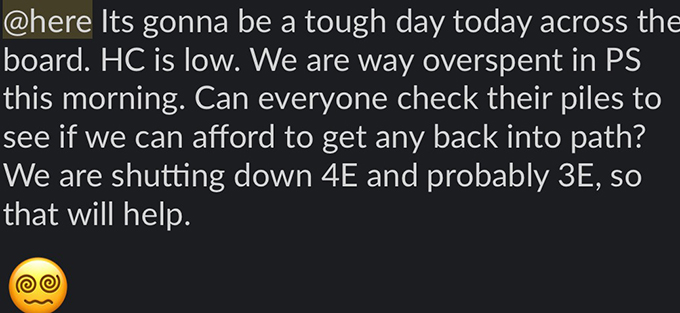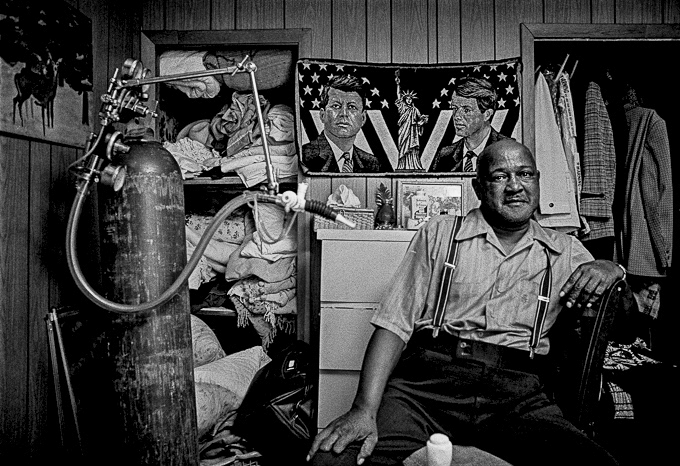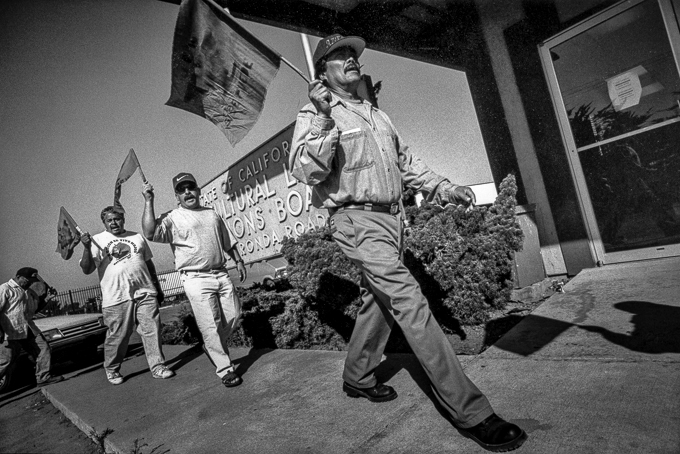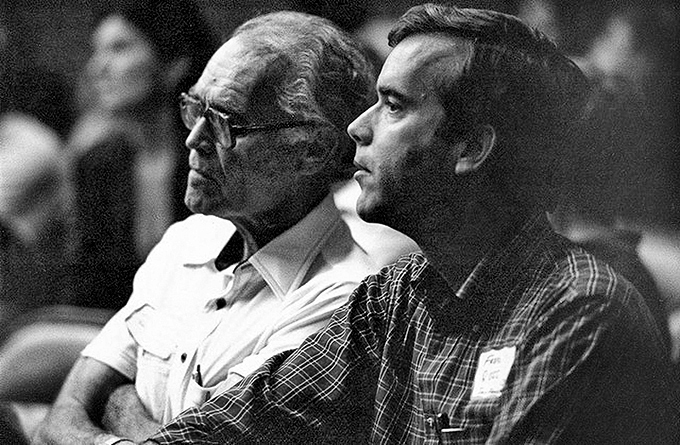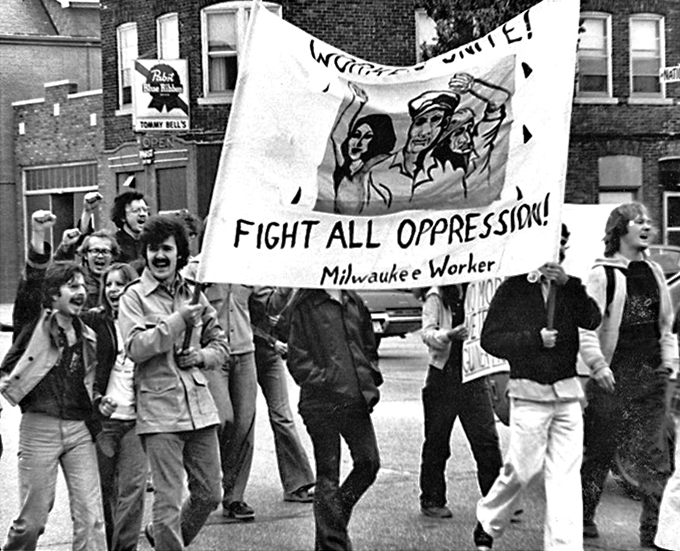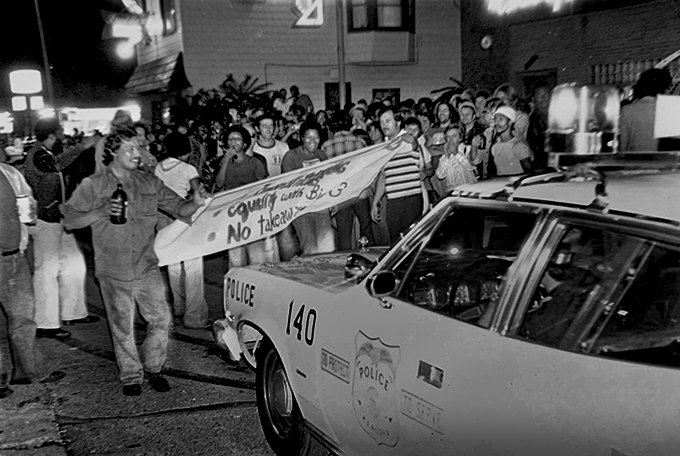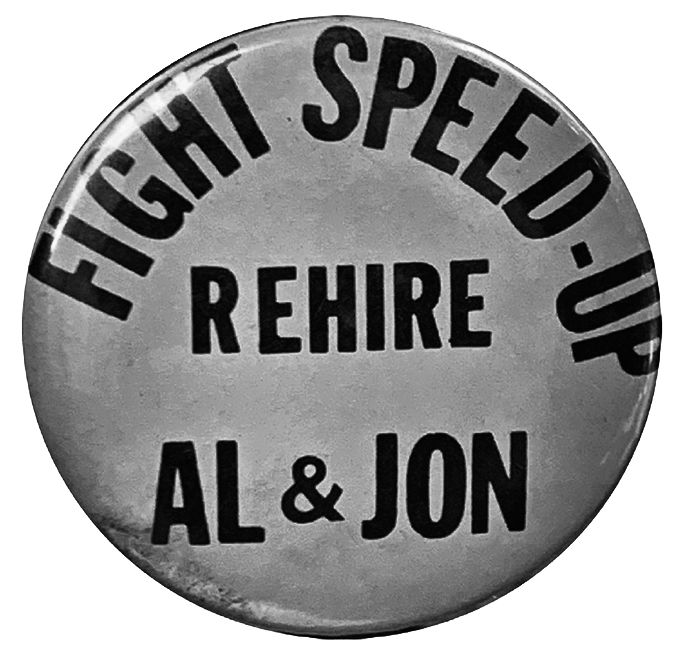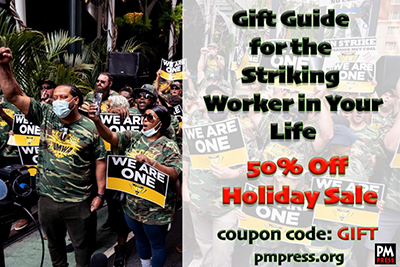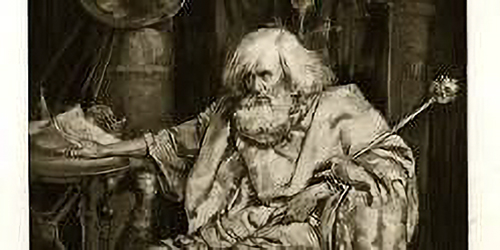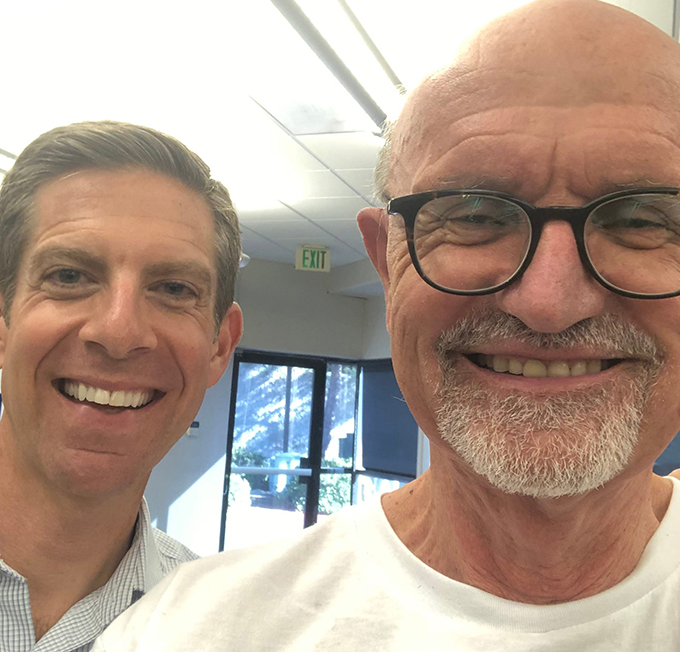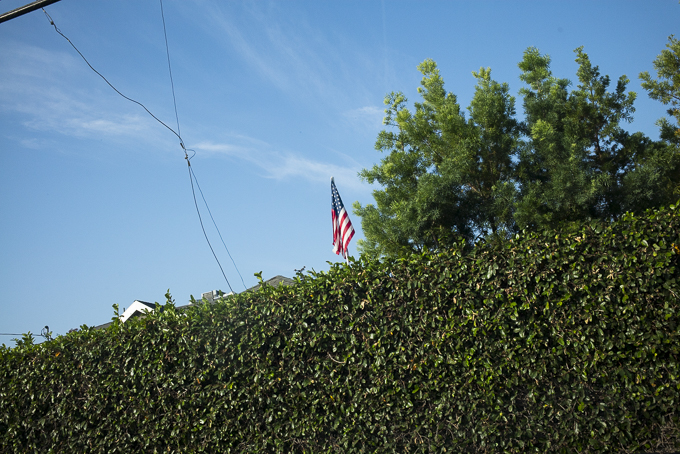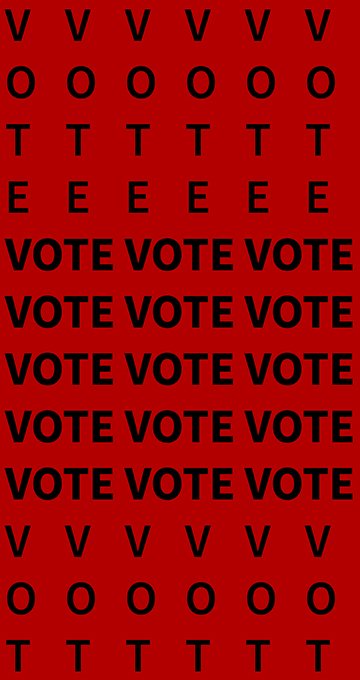“Because we can, so we should.”
By Peter Tappeiner
“You can withstand. You will overcome. You will have the voice you need and deserve. You will inspire workers across this country.” Fred Ross, Jr.
I’ve been moved by the wonderful remembrances and tributes to Fred Ross, Jr. As one of many people transformed by Fred during his 50-year career in movements for justice, I remain in awe of the scope and depth of his work. But as any organizer knows, those 50 years are made of daily interactions with other organizers and people struggling to make their jobs, lives, and our world better. I’m sharing my story about working with Fred in an effort to honor what he taught me and some of what I believe Fred’s life and work has to teach all of us.
Fred was an organizer’s organizer. He approached this work with rigor, joy, passion and an unwavering belief in people and our ability to do incredible, seemingly impossible things.
In my time as organizer at SEIU Local 250 and then SEIU United Healthcare Workers – West, I had the joy of working with Fred from 2004 through 2009. I also had the privilege of being led by him throughout 2006, 2007 and 2008.
Fred and I (along with many others) worked together with workers from Santa Rosa Memorial Hospital (“Memorial”) and workers from other Catholic hospitals around California that were part of the Saint Joseph Health System (SJHS). SJHS was the only non-union statewide hospital system in California. I was 22 years old and less than six months into my career as an organizer when I first met with workers from Memorial. In 2004, workers at Memorial had filed for an election to join Local 250 but made the difficult decision to withdraw that petition in early 2005 in the face of a vicious anti-union campaign.
After cancelling the election, we quickly moved to begin a campaign calling on Memorial to agree to ground rules for a free and fair election, like California’s largest Catholic hospital system, Catholic Healthcare West, had done a few years prior.
The campaign became part of a national effort by SEIU to hold Catholic hospital systems to the Church’s stated values and to refrain from the standard anti-union tactics common in any contested organizing drive. We believed that victory was possible at Memorial and SJHS in part because the Sisters of Saint Joseph of Orange – the otherwise progressive order who founded the hospitals – still had a majority of seats on the corporate board and the Sisters had demonstrated their willingness to overrule the lay corporate leadership.
By the time I began working with Fred, I was a green Lead Organizer, responsible for leading a team of other organizers and the day-to-day activities of the campaign. For four years workers at Memorial, undertook a campaign of escalating public actions aimed at building an ever-growing chorus of voices important to the sisters. Eventually Memorial workers were joined by other SJHS hospitals in Northern California and Orange County (Southern California) in demonstrating workers’ unrelenting demand for a voice at work and a fair process for organizing.
Fred took his role as a trainer and mentor as seriously as anyone I’ve ever worked with. Even at the time, it was clear to me that he deeply felt the responsibility of training the next generation of organizers. At each of our – at least weekly – one-on-one meetings, Fred would sit down with his omnipresent yellow legal pad, and I would glance with no small amount anxiety at the list of items we had to discuss in each meeting. That list seemed to get longer every week. (Now that I’ve spent 20 years working in the labor movement, I’ve learned that list never stops getting longer.)
Because he believed in our campaign, and my ability to lead a piece of it, Fred had high expectations of me. I remember my first time leading a meeting of our organizing committee. I had written an agenda that probably wasn’t very good and sent it to Fred. Late into the evening Fred spent over an hour walking me through changes. He was clear about the changes he thought were important; but led me through that conversation by not just telling me what to do, but by interrogating and challenging me to come up with something that met the needs of the campaign.
Fred had similarly high expectations of what the worker leaders who made up the organizing committee were capable of and was equally invested in their development. In any long campaign it’s normal for a certain amount of fatigue to set in, so we were constantly strategizing with workers at Memorial about how to reinspire and motivate their coworkers.
By the fall of 2007, workers had organizing committees in the three Orange County hospitals as well as Santa Rosa and Petaluma and we were planning two consecutive weekends of marches to the hospitals, calling on SJHS to agree to a free and fair election. To ensure strong participation, Fred suggested a series of house meetings led by the committee. I would learn this was classic Fred Ross, Jr. The organizing committee members would invite coworkers from their department to their homes and lead them through an agenda developed by the committee designed to reground them in why they were organizing, inspire them about the progress we had made, and get their commitment to attend the march in Santa Rosa.
One by one, members of the committee did turnout to their house meetings, led the agenda, and got their coworkers committed to attend this march from downtown Santa Rosa to Memorial Hospital. On that day the energy was electric. The march was led by the Memorial workers and joined by other union hospital workers and community supporters. When we started the march, it was like someone fired a starting pistol. The Memorial workers took off at such a pace that I had to run to the front of the march to slow them down so that the rest of the marchers could catch up.
Fred trusted workers to make decisions and know that their power was key to victory. He knew there was no winning without workers driving the campaign. Early in our time working together we organized a majority of workers at Memorial to sign on to a letter calling for a fair process. I remember Fred telling me about a conversation he had with another senior leader of SEIU who was organizing Catholic hospitals who asked, “Fred, why are you wasting time getting a majority in Santa Rosa?” Fred’s response was simple, “Because we can, so we should.” I came to learn that was an important lesson about the centrality of workers to their own campaign. A view I would learn was not shared by all of Fred’s peers at the SEIU International Union.
“They did what good organizers do best, listen and engage.“
By the summer of 2008 we were ready for another escalation, this time focused directly on the Sisters of Saint Joseph of Orange themselves. To pull off an action directed at an order of nuns would require no small amount of finesse. Fred, with leaders like Glenn Goldstein from our local – by then, SEIU-United Healthcare Workers West – and his organizing partner Eileen Purcell, had spent significant time coming up with an action plan that would strike the right balance of militancy and moral suasion. Drawing on his formative experiences in the United Farm Workers, and echoing Cesar Chavez’s historic fast in 1968, Fred proposed a series of fasts at the different hospitals.
Santa Rosa remained our strongest shop, so we knew for this plan to work, the leaders at Memorial would have to embrace it. On a rainy weekend in late spring, we gathered the top leaders, a committee that had been organizing for five years and were the hardest core of union support in the entire company. After a discussion of the progress we had made and where we saw potential to move the company, Fred laid out the idea for the fast.
It went over like lead balloon. Reactions ranged from uncomfortable silence to incredulity, “you want us to do what?!” Eventually, one of the committee members – a phlebotomist who had been one of the first people to contact the union – said “I’ve been on board with everything we’ve done in this campaign and If we decide to do this, I’ll probably do it, but I don’t think it’s a good idea.”
Fred and the other staff didn’t try to force a fake consensus or ram through a decision. They did what good organizers do best, listen and engage, arriving at a plan to hold a week of action outside the Sisters’ Motherhouse, during an anniversary celebration that would be attended by current and former members of the order, several of whom had become allies of the workers over the preceding years.
The week of action was classic Fred. Exploiting decades of relationships and contacts, Fred enlisted those that would carry weight with the Sisters to join the rallies, vigils, and art projects, and even the evening communion on the sidewalk outside the gates to the Motherhouse.
Then Attorney General (and future Governor) Jerry Brown, National Farmer Worker Ministry founder Chris Hartmire and former UAW leader Paul Schrade all joined workers in calling on the Sisters to return to their values and respect hospital workers’ right to a free and fair election. The week culminated in an enormous march with workers making the trip down from Santa Rosa to join their sisters and brothers in Orange County, well over 400 miles south. The power that workers had built was evident when several weeks later the company reached out to begin negotiations for a fair election in Santa Rosa, that would set a pattern for all 9,000 SJHS employees around the state. Unfortunately, those negotiations would not bear fruit for reasons that would only become clear later.
Simultaneous to this campaign, another campaign was being waged by the Andy Stern lead SEIU against the very local that the SJHS workers were fighting to join: SEIU-United Healthcare Workers – West. Stern’s campaign led to the trusteeship of SEIU-UHW in January of 2009 and the suspension of SEIU’s campaign in Santa Rosa. However, the members and leaders of SEIU-UHW founded a new union – the National Union of Healthcare Workers (NUHW) – to carry on the tradition of militant, democratic unionism that had become impossible inside SEIU.
The workers in Santa Rosa were faced with a choice:
1) Wait and see if SEIU would resume their campaign
2) Stop organizing altogether
3) Organize with NUHW, a newly created union with no members and little to no resources, to take on what would inevitably be a fight with one of the largest unions in the US, as well as the employer who had been fighting us for nearly 6 years.
Many of the same core leaders, committee members who less than a year before had gathered to plan a key escalation in a growing and powerful campaign, met in a common room at the condo complex where one of them lived. They made the hard decision to organize with NUHW. Without the principled leadership of organizers like Fred, I don’t know if they would have felt empowered to make that choice.
While Fred had worked with us at SEIU-UHW on the SJHS campaign, he was employed by SEIU International and had deep relationships with SEIU’s national leadership.
Learning of the SEIU’s betrayal of workers in Santa Rosa and that union’s attacks on UNITE HERE, Fred resigned from the SEIU International in March of 2009 to stand with those who had decided to organize with the NUHW. As Fred would write in a December 2009 letter to Santa Rosa Memorial Hospital workers, as they prepared for an election to join NUHW:
“The tipping point came when I learned in February [2009] that the international union had decided in August 2008 to withdraw support for your campaign. This was at a critical moment. We had conducted our week of action in Orange County in July of that year at the SJHS Motherhouse, and won unprecedented national publicity.
How did I find out that SEIU had withdrawn support for you when you needed it most? Last February, SEIU leaders from Washington took over its California healthcare local, SEIU-UHW. The campaign was suspended. Days later, over 200 SRMH workers were informed of impending layoffs. I offered to fight the layoffs alongside an experienced organizer who had spent two years on the campaign. However, this organizer was told by the new SEIU-UHW leadership, installed by Andy Stern, that SRMH workers were no longer a priority.
Several days later, a national leader of SEIU told me that SEIU could probably get a free and fair election agreement from SJHS by that June. I was shocked by what he admitted next: that the International union made a decision in August 2008 no longer to support workers at SJHS or put pressure on the system, because they did not want you to have the opportunity to vote for a union led by Sal Rosselli. SEIU broke faith and trust with you by deserting you when you most relied on them. This misconduct seriously undermined the opportunity you had to win a fair election agreement with SJHS in the fall of 2008.”
These are painful memories of a deeply ugly time in our movement and part of me is reluctant to share them in what is a celebration of the life and work of someone to whom I owe so much. But I know that Fred was motivated by his abiding faith in our ability to do hard and courageous things when we are called to do so. That lesson of integrity in and dedication to building true popular power is one I hope to live up to in my life and work.
But even in that moment of darkness, Fred ended his letter to Memorial workers on a note of hope:
“Keep your eyes on the prize. You can withstand SJHS’s anti-union campaign. You will overcome SEIU’s campaign of smear, fear and futility. By voting for NUHW, Memorial Employees will have the voice you need and deserve for yourselves and your patients. It will also send a powerful message to SJHS and SEIU and inspire workers in the rest of SJHS and in Catholic hospitals across this country.”
It should come as no surprise to anyone who knew him that Fred’s prediction was right. Workers at Memorial won their election, NUHW: 283, SEIU: 13, No Union: 263. And after lengthy legal delays brought by their employer, they won a first contract in 2012. Workers at three other SJHS hospitals in Northern California went on to organize their union with NUHW.
Looking back at the closing paragraph of Fred’s letter, I see a mantra that defines Fred’s attitude towards every campaign, election, strike or fight for justice. Words that exemplify his belief in workers and everyday people: Keep your eyes on the prize. You can withstand. You will overcome. You will have the voice you need and deserve. You will inspire workers across this country.
FRED ROSS, JR, PRESENTE!
.
Fred’s last campaign was organizing financial support for an upcoming documentary about his father, Fred Ross, Sr. Take a minute to visit www.fredrossproject.org and make a contribution.
A memorial for Fed Ross, Jr. is scheduled for February 26th, 2023 at Delancey Street. Time to be determined. Delancey Street is at: 600 Embarcadero San Francisco, CA 94107.
If you would like to attend, please RSVP to: fredrossjrmemorial@gmail.com
…
“We’re the ones who fill the trucks—so Bezos makes a billion bucks”: Global Actions on Black Friday Unite Workers to ‘Make Amazon Pay’
By Peter Olney and Rand Wilson
Over the last 27 years Amazon has grown from a little-known online bookseller to a global sprawling logistics and delivery empire, overtaking brick-and-mortar retailers with its e-commerce offerings and threatening to make serious inroads on last-mile carriers like FedEx, UPS, and the Postal Service. Recently Amazon even established a virtual health services company: Amazon Clinic.
As the company’s tentacles reach around the world, organizing its massive 1.5 million workforce necessitates new levels of international union cooperation and solidarity.
UNI Global Union, a federation representing logistics and service workers headquartered in Geneva, Switzerland, stepped up for the third year in a row to coordinate worldwide actions on one of the busiest shopping days of the year, Black Friday.
Under the banner of “Make Amazon Pay,” Amazon workers and allies organized 140 industrial actions and protests in 40 countries, with the broadest and most militant actions taking place in France and Germany, where union federations jointly led strikes at 18 warehouses, according to Nick Rudikoff, UNI’s campaigns director.
In Berlin, 100 workers and supporters rallied and used a projector to emblazon an Amazon warehouse with the words, “The wrong Amazon is burning!” The workers in Germany were demanding that the company recognize national collective bargaining agreements with their union, covering retail and the mail-order trade sector.
In Delhi, India, 40 workers went on strike at a new facility. Actions also took place in Australia, Japan, South Africa, and South America.
A DOZEN U.S. ACTIONS
Past Black Friday actions have had little participation from U.S. Amazon workers. However, at the Labor Notes conference in June, workers came together from a range of unions—Teamsters, Postal Workers (APWU), Retail and Department Store Workers (RWDSU), the Amazon Labor Union, Ver.di, Carolina Amazonians United for Solidarity and Empowerment, Amazonians United—and vowed to stay in touch to learn from each other.
The planning paid off: a dozen actions led by U.S. Amazon workers, plus many other community-backed protests supported by the Athena coalition and Good Jobs First, took place on Black Friday.
In Alabama, Amazon workers—joined by Starbucks and mine workers—flyered at the fulfillment center in Bessemer—part of the campaign to keep the organizing momentum alive there, after workers lost a second union authorization election earlier this year, with a narrower margin than the first one (though the results still have to be certified by the Labor Board).
A chapter of Amazonians United in Upper Marlboro, Maryland, reported that they wore Make Amazon Pay stickers with 70 percent participation from fellow workers. Workers and allies protested outside Amazon headquarters in Seattle and Jeff Bezos’s penthouse in New York City; protests at Whole Foods stores were organized by Our Revolution.
STRIKE SNARLED PRODUCTION
The most notable action was in the St. Louis suburb of St. Peters, Missouri, where Amazon workers at the fulfillment center STL8 went on strike to demand safer working conditions and better pay. The strike began with a worker chanting, “Clock out, walk out!” They were joined outside by a large group of community supporters.
“We’re the ones who fill the trucks—so Bezos makes a billion bucks,” workers chanted, referring to Amazon’s founder and executive chairman.
“We need safer work,” said Jennifer Crane, a worker at the facility. “Things don’t need to be this way. Amazon can afford to give us a living wage and to provide us a rate of work that doesn’t lead to injuries or death.”
The walkout had snarled production, according to a screenshot from a manager’s text message on the company app, which read, “Its gonna to be a tough day today across the board. HC [head count] is low.”
The workers are demanding $10-per-hour raises, the removal of a 36-month cap on raises, and an additional $1 per hour for each job employees are cross-trained on. They also called for a worker-led committee to ensure better job accommodations for injured workers.
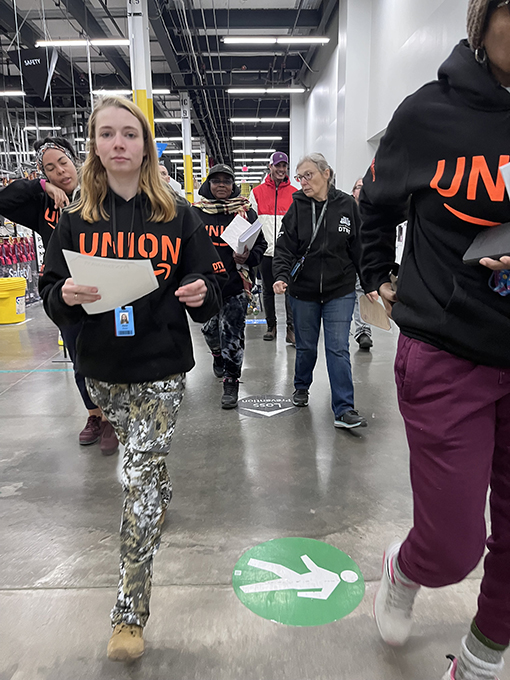
Amazon workers at a fulfillment center in Detroit affiliated with the Postal Workers also staged an action. The “DTW1 YOUnion” organizing committee distributed a special Black Friday edition of its newsletter. Then, wearing bright “UNION” shirts, they marched on the H.R. department with a comprehensive set of demands for better wages and working conditions. Members reported that as they marched, more workers spontaneously joined in.
Since the onset of the pandemic, the price of everything you can imagine has increased,” said Denise Jones, a member of the organizing committee. “The state of our cost of living is soaring! We can barely afford to feed ourselves and our families. Yet we give, we give, we give, and receive little in return.”
PLANNING FOR 2023
While the U.S. participation was still small and uneven, we took a step forward to unite many of the forces organizing at Amazon (unions, nonprofit groups, solidarity union networks). That unity bodes well for nurturing an ecumenical organizing strategy to build Amazon workers’ power.
Each group has its own approach, with some focusing on winning NLRB elections, others on last-mile delivery stations in metro regions, others still on air hubs and fulfillment centers.
Most of the U.S. organizers reported that numerous and more militant Black Friday actions at Amazon worldwide really inspired their co-workers and raised new awareness of the global nature of their work.
Even in Italy, where there were no strikes on Black Friday, there were solidarity assemblies and leafleting in support of the actions taken internationally. The Italians launched the first strike against Amazon in 2017, and their national strike in 2021 got Amazon to adhere to their national collective agreement for warehouse workers.
Planning has already begun for Black Friday 2023, as all parties recognize that organizing Amazon will require the broadest possible forces coordinating their actions nationally and internationally. Logistics workers of the world, unite!
…
This article first appeared in Labor Notes, check them out
Miners for Democracy – 50 years on it’s back to the future
By Steve Early
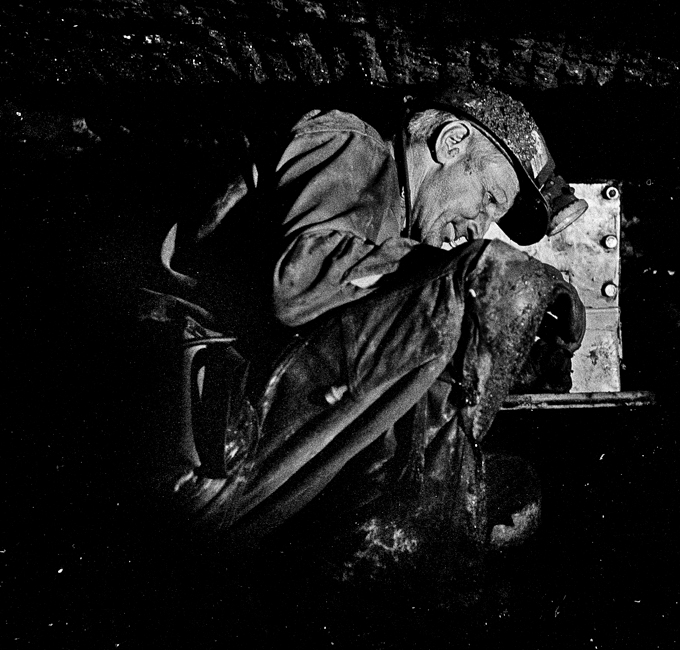
On December 14, 1972, coal miners rocked the American labor movement by electing three reformers as top officers of the United Mine Workers of America (UMWA), a union which at the time boasted 200,000 members and a culture of workplace militancy without peer.
In national balloting supervised by the U.S. Department of Labor (DOL), Arnold Miller, Mike Trbovich and Harry Patrick ousted an old guard slate headed by W.A. (“Tony”) Boyle, the benighted successor to John L. Lewis, who ran the UMWA in autocratic fashion for 40 years. Boyle’s opponents, who campaigned under the banner of Miners for Democracy (MFD), had never served on the national union staff, executive board, or any major bargaining committee. Instead, 50 years ago they were propelled into office by wildcat strike activity and grassroots organizing around job safety and health issues, including demands for better compensation for black lung disease, which afflicted many underground miners.
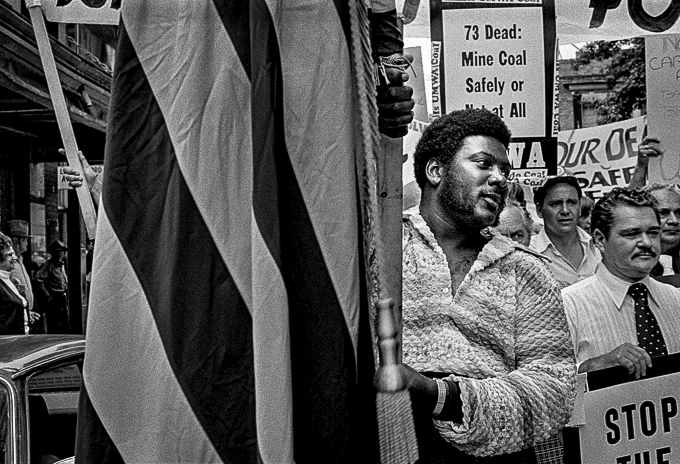
Today, at a time when labor militants are again embracing a “rank-and-file strategy” to revitalize unions and change their leadership, the MFD’s unprecedented victory — and its turbulent aftermath — remains relevant and instructive. In the United Auto Workers (UAW), for example, local union activists recently elected to national office — and fellow reformers still contesting for headquarters positions in a runoff that begins January 12 — will face similar challenges overhauling an institution weakened by corruption, cronyism and labor-management cooperation schemes. Some UAW members may doubt the need for maintaining the opposition caucus, Unite All Workers for Democracy (UAWD), that helped reformers get elected, but the MFD experience shows that such political breakthroughs are just the first step in changing a dysfunctional national union.
Imagine what it was like for coal miners in the 1970s to challenge an even more corrupt and deeply entrenched union bureaucracy, with a history of violence and intimidation directed at dissidents. When Joseph (“Jock”) Yablonski, a Boyle critic on the UMWA executive board, tried to mount a reform campaign for the UMWA presidency in 1969, that election was marked by systematic fraud later investigated by the DOL. Soon after losing, Yablonski was fatally shot by union gunmen, along with his wife and daughter, as Mark Bradley recounts in Blood Runs Coal: The Yablonski Murders and the Battle for the United Mine Workers of America.
Just three years later, MFD candidates were able to oust Boyle and his closest allies, but without winning control of the national union executive board. As inspiring as it was at the time, this election victory ended up demonstrating the limitations of reform campaigns for union office when they’re not accompanied by even more difficult efforts to build and sustain rank-and-file organization. Of all the opposition movements influenced by the MFD, in the 1970s and afterwards, only Teamsters for a Democratic Union (TDU) has achieved continuing success as a reform caucus, largely due to its singular focus on membership education, leadership development and collective action around workplace issues.
Contested elections are rare
Then and now, contested elections in which local union leaders — not to mention working members — challenge national union officials are very rare. Rising through the ranks in organized labor generally means waiting your turn, and when you capture a leadership position, holding on to it for as long as you can. Aspiring labor leaders most easily make the transition from local elected positions to appointed national union staff jobs if they conform politically.
Dissidents tend to be passed over for such positions or not even considered unless union patronage is being deployed by those at the top to co-opt actual or potential critics. As appointed staffers move up via the approved route, whether in the field or at union headquarters, they gain broader organizational experience by “working within the system” rather than bucking it.
If they become candidates for higher elective office later in their careers, they enjoy all the advantages of de facto incumbency (by virtue of their full-time positions, greater access to multiple locals and politically helpful headquarters patrons). Only a few national unions — including the UMWA, Teamsters, the NewsGuild/CWA, and now, with inspiring results so far, the UAW—permit all members to vote directly on top officers and executive board members.
Different route to the top
On paper, coal miners long had a “one-member, one-vote” system. But, by the late 1960s, there had not been a real contest for the UMWA presidency in four decades. Lacking the stature of his legendary predecessor John L. Lewis, a founder of the Congress of Industrial Organizations, Tony Boyle had become a compliant tool of the coal industry, unwilling to fight for better contracts or safer working conditions. Increasingly restive miners staged two huge wildcat work-stoppages protesting national agreements negotiated in secret by Boyle (with no membership ratification). In 1969, 45,000 UMWA members joined an unauthorized strike demanding passage of stronger federal mine safety legislation and a black lung benefits program for disabled miners in West Virginia.
Despite passage of the 1959 Landrum-Griffin Act, which created a “bill of rights” for union members, Boyle was able to maintain internal control by putting disloyal local unions and entire UMWA districts under trusteeship, which deprived members of the right to vote on their leaders. Jock Yablonski’s martyrdom set the stage for a rematch with Boyle. It took the form of a government-run election, ordered after a multi-year DOL investigation of violence, intimidation, vote-tampering and misuse of union funds by Boyle’s political machine. The standard bearers for reform in 1972 were Yablonski supporters who created MFD as a formal opposition caucus a few months after his death. They also published a rank-and-file newspaper called The Miners Voice as an alternative to the Boyle-controlled UMW Journal.
At MFD’s first and only convention, 400 miners adopted a 34-point union reform platform and nominated Arnold Miller from Cabin Creek, W.V. as their presidential candidate. Miller was a disabled miner, leader of the Black Lung Association and former soldier whose face was permanently scarred by D-Day invasion injuries. His running mates included another military veteran, 41-year-old Harry Patrick, a voice for younger miners, and Mike Trbovich, who helped coordinate Yablonski’s campaign in Pennsylvania. Despite continuing threats, intimidation, and heavy red-baiting throughout the coalfields, the MFD slate ousted Boyle by a margin of 14,000 votes out of 126,700 cast in December 1972.
Propelled by militancy
The union establishment was deeply shocked and unsettled by this electoral upset. Not a single major labor organization (with the exception of the independent United Electrical Workers) applauded the defeat of Boyle, an already convicted embezzler, who was later indicted and found guilty of ordering the assassination of Yablonski. The MFD victory and its tumultuous 10-year aftermath has been chronicled by such authors as former UMWA lawyer Tom Geoghegan in Which Side Are You On? Trying to Be for Labor When It’s Flat on Its Back, labor studies professor Paul Clark in The Miners Fight for Democracy: Arnold Miller and the Reform of the United Mine Workers, women’s studies professor Barbara Ellen Smith in Digging Our Own Graves: Coal Miners and the Struggle of Black Lung Disease, and the late Paul Nyden, a Charleston Gazette reporter, in Rebel Rank and File: Labor Militancy and Revolt from Below During the Long 1970s, a collection of case studies about the period’s labor insurgency.
As Nyden noted, the MFD’s grassroots campaign “channeled the spontaneous militancy arising throughout the Appalachian coal fields.” Before and after their election, MFD candidates had key allies inside and outside the union. Among the former, according to Nyden, were “wives and widows of disabled miners, wildcat strikers, and above all the young miners who were dramatically reshaping the composition of the UMWA.” Among the “outsiders” were community organizers, coalfield researchers, former campus activists, investigative journalists, and public interest lawyers, some of whom would later play influential roles as new national union staffers.
The MFD inherited a deeply divided organization, with internal and external problems that would have been daunting for any new leaders, not just working members suddenly catapulted from the coalfields into unfamiliar union headquarters jobs. In Digging Our Own Graves, Smith faults MFD leaders for deciding to “dismantle their own insurgent organization” because the “skeletal network of rank-and-file leaders” that was the MFD had “basically become the institutional union.”
“Many activists joined the union’s staff or became preoccupied with running for office in their new autonomous districts,” she writes. “The decision to disband the MFD had serious consequences, however. It left the new administration without a coherent rank-and-file base and it left the rank-and-file without an organized vehicle to hold their new leaders accountable.”
Photo of Harlan
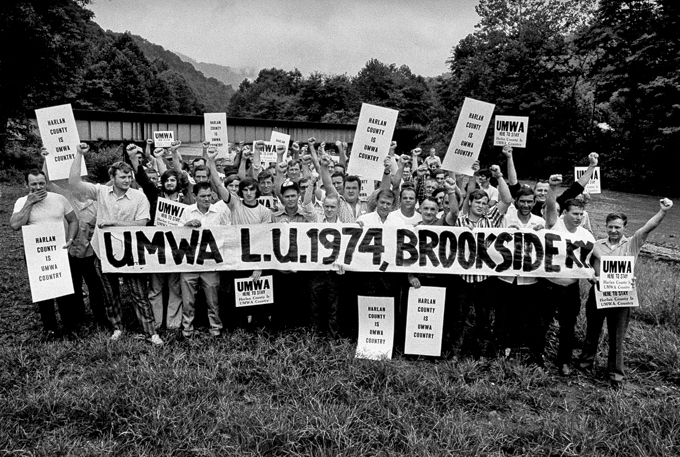
The reformers elected in 1972 did succeed in democratizing the structure and functioning of the UMWA. They also revitalized union departments dealing with workplace safety, organizing, membership education, internal communication, and strike support (see Harlan County USA, an Academy Award-winning documentary, about one early test of the MFD’s commitment to fighting back, rather than selling out).
In the crucial area of national contract negotiations and enforcement, greatly heightened membership expectations were harder to meet. A 1974 settlement with the Bituminous Coal Operators Association (BCOA) provided wage increases of 37% over three years, a first-ever cost-of-living allowance, improvements in pensions and sick pay, strengthened safety rights and job security protection. But the new leadership’s approach to grievance procedure reform did not resolve the greatest point of tension between rank-and-file militants and those among them elevated to top union office.
In the mid-1970s, the underground miner tradition of direct action was still so strong that UMWA members regularly walked off the job over local disputes of all kinds. Their culture of solidarity enabled roving pickets to shut-down mines nearby, in the next county, or an adjoining state, even if a different BCOA employer was targeted and the conflicts involved were unrelated.
These wildcat strikes subjected the national union to potentially ruinous damage suits by coal operators seeking to enforce a much ignored “no strike” clause, which required most grievances to be submitted to binding third-party arbitration. In 1974, new UMWA negotiators did not press for an open-ended grievance procedure that might have turned such quick strikes into a more disciplined and legal tool for contract enforcement. Instead, they agreed to the creation of an Arbitration Review Board, which merely added another frustrating step to a dispute resolution process already back-logged and overly judicialized. As post-contract discontent mounted in 1975 and 1976, an estimated 80,000 to 100,000 miners joined unauthorized strikes for the “right to strike,” while also protesting federal court sanctions (fines or imprisonment) of strikers who ignored back-to-work orders.
A counter revolution
Within the union, the conservative Boyle forces continued to be a strong obstructionist force in some UMWA districts. Frustrated by Arnold Miller’s shortcomings as a negotiator and administrator, the most promising MFD leader — Secretary-Treasurer Harry Patrick — mounted an unsuccessful challenge to his fellow officer in a three-way race for the UMWA presidency in 1977.
Re-elected with a former Boyle supporter as his running-mate, Miller became increasingly weak, isolated and ineffective. His erratic handling of national bargaining with the BCOA helped set the stage for a 111-day strike by 160,000 miners who had to battle both the coal operators and their own faltering leadership. Highlights of that 1977-78 struggle included two contract rejections and a failed Taft-Hartley Act back-to-work order sought by President Jimmy Carter, a White House intervention even more controversial than Joe Biden’s role in the current national rail labor dispute.
UMWA contract concessions in 1978 and 1981 made organizing the unorganized increasingly difficult. More coal production shifted to the West, where huge surface mines required much smaller workforces, which usually remained “union free.” In the meantime, the multi-employer BCOA began to fragment, leaving the UMWA with fewer and fewer companies with which to negotiate an overarching national contract. Even firms operating in the eastern coalfields started non-union affiliates or subsidiaries, in what was becoming a declining industry.
More competent, progressive leadership was not restored until a second-generation reformer, Richard Trumka, took over as UMWA president in 1982. Trumka defeated Sam Church, who replaced Miller when the latter retired, after multiple heart attacks, in 1979. Trumka had gained valuable experience in the UMWA legal department during the mid-1970s. He had been a working miner before going to law school and then returned to the mines in preparation for seeking union office. But even with steadier, more skilled hands at the helm — and an inspiring strike victory at the Pittston Coal Company in 1989 — the union entered a downward spiral of reduced membership and diminished organizational clout.
Long before Trumka’s ascendency, most of the college-educated non-miners, who were swept into key positions by the MFD’s victory in 1972, had left UMWA employment. Some went to work for other unions, including the Teamsters under the TDU-backed presidency of Ron Carey in the 1990s. In 1995, Trumka become secretary-treasurer of the national AFL-CIO and, 14 years later, its president until his death last year at age 72. At the UMWA, he handed the reigns to his vice-president Cecil Roberts, who was part of the generation of recently-returned Vietnam veterans who got jobs in the mines and backed the MFD in 1972. Roberts serves on the AFL-CIO executive council and continues to rally UMWA members and their families against a resurgence of black lung disease due to coal and silica dust exposure among underground miners.
But, in recent years, the UMWA has been much preoccupied with the bankruptcy of leading coal producers, resulting lay-offs, and related political fights to protect the pensions and healthcare coverage of retirees who now far outnumber working members. Since April 2021, more than 1,000 Alabama members have been on strike against Warrior Met Coal, which is currently the union’s most high-profile contract struggle. Four years ago, Roberts — now 76 years old — was re-elected by acclamation to his sixth full term as national president. This makes him the second longest serving UMWA leader after John L. Lewis.
As modern UMWA history confirms, the road to rank-and-file power includes many pot holes and more than a few detours along the way. If union members can create a durable opposition movement and effectively utilize direct election of top officers, even many decades of institutional stagnation can be replaced by uplifting periods of organizational revitalization. But struggles for union democracy and reform often face larger constraints, including downsizing and restructuring of the industry which employs those seeking to revitalize their union and improve its leadership. Auto workers in the UAW have long suffered from a less severe decline of their basic industry but now have a rare and exciting opportunity to turn a union reform victory into a longer-lasting embrace of new organizing, bargaining and strike strategies that would benefit both white-collar and blue-collar members.
…
This article is also running in “In These Times”
Without a Whimper Or a Wail
By Stewart Acuff
Without either a whimper or a wail, the Democratic Party leadership easily, slyly, quietly, and quickly blocked a strike of railroad workers demanding the dignity of caring for themselves and their families.
Bargaining between the freight railroads and the workers’ unions had dragged on with difficulty with workers fighting for decent working conditions and human conditions of life.
Squeezing dignity and respect from the workers is what has enabled the railroad corporations to add billions to their profits. A Presidential Emergency Board (PEB) meeting in September resolved all the issues except sick leave. The railroad companies offered just one day of sick leave per year – up from zero. The workers continued to push for one day of sick leave every two months, a total of seven days a year. Seven days a year was the number Democrats had promised to legislate for all American workers, whether union or not.
But when workers voted down the PEB settlement and began preparing to strike for a contract that included sick leave, the President and Democratic congressional leadership moved, passed, and signed legislation making such a strike illegal.
Of course, they did the obligatory obfuscation. The House passed the legislation with seven days of sick leave in it. Sen. Bernie Sanders did all he could to include sick leave with an amendment to the Senate bill. But it failed with West Virginia Sen. Joe Manchin voting with Republicans to kill it, continuing his long record of anti-worker votes.
So, legislation stopping the strike without seven days of sick leave passed both Democratic-led Houses and was signed by a Democratic President.
IT’S NEVER RIGHT TO BREAK A STRIKE. NOT WITH BASEBALL BATS, TIRE IRONS OR GUNS, AND CERTAINLY NOT WITH LEGISLATION AND GOVERNMENT ACTION.
Of course, Democrats didn’t want a rail strike right before Christmas with freight containers of toys made in Asia and demand forcing up costs even more.
BUT WHAT IS WRONG, TROUBLING, AND DISAPPOINTING, IS THE SPEED, RAPIDITY, EASE AND GREASED PROCESS OF THE DEMOCRATIC LEADERSHIP IN VIOLATING THEIR PROMISES AND CURTAILING THE HUMAN RIGHT TO WITHHOLD ONE’S LABOR. ALL DONE WITHOUT ANY RESISTANCE TO THE FREIGHT RAIL CORPORATIONS.
Railroad profits have increased by billions in this past year. Third quarter profits were up as much as 13% to 15%. The only reason for them to deny sick leave is to make billions on the everyday family struggles of railroad workers. THAT IS OBSCENE!
The least we should be able to expect from a truly labor friendly Democratic leadership would be to publicly challenge the railroads on their dangerous and inhumane demands of workers and families. There are Democratic mayors across America who’ve prevented such strikes by putting the responsibility where it belongs…on the Boss.
I do not believe we should leave the party, but we should demand more than empty rhetoric and dusty policy on a shelf.
I was at the bargaining table when the Mayor of Santa Fe, N.M. prevented a hospital strike by challenging the boss to bargain with us in his conference room in City Hall at all hours till we reached a contract.
When we elected a mayor in Atlanta, GA, during our fight for worker justice in the 1996 Atlanta Olympics, he appointed me to the Atlanta Olympics Executive Council. Our fight went from the streets to the suites and the work was done union, with union wages and working conditions.
What if President Biden had said he wouldn’t sign any bill on the strike without seven days of sick leave? Or, until the railroads guaranteed sick leave?
What if the administration had challenged the parties to bargain at the Department of Labor with Secretary Walsh at the table?
What if Senate Majority Leader Schumer had refused to put the legislation on the floor for a vote without seven days of sick leave?
Instead, I watched Transportation Secretary Pete Buttigieg on CNN debating Jake Tapper, with Tapper demonstrating more good sense and understanding than the Secretary robotically insisting seven days of sick leave is the position of the administration, even as he dismissed working families’ needs.
WHAT IF THE PRESIDENT, HIS CABINET AND DEMOCRATIC LEGISLATORS HAD MADE THE LACK OF SICK LEAVE FOR RAILROAD WORKERS THE HEALTH AND PUBLIC SAFETY CRISIS IT IS?
The railroad corporations can run trains remotely without workers. They think they don’t need human beings. And they have no use for anything that keeps them from maximizing shareholder wealth and stock values at all costs, including human costs.
The response of leaders of a pro-worker political party is not rolling over, tail between their legs, but to fight for workers and the safety of the American people.
It’s painful to see Democratic leaders so remote and removed from our everyday lives that they can’t express empathy, much less strategize with unions to get workers what they need.
All this is exactly why it is time for workers and their unions to re-negotiate the relationship with the Democratic Party. I do not believe we should leave the party, but we should demand more than empty rhetoric and dusty policy on a shelf.
Since Ronald Reagan over 40 years ago and the government/corporate assault on labor, worker wages, benefits, and conditions have flattened out, or stagnated, shrinking buying power, our security, and forcing more workers into poverty. More and more families face the stresses of life with multiple bad, exploitative jobs, and exploding inequality.
Organized labor has struggled to respond with more militancy, national strikes, and much more organizing in the non-manufacturing economic sectors. But the ravages of late-stage capitalism have continued to reduce union density across the economy.
Just as tragedy in World War Two changed the labor market in the 40’s and 50’s, so has the Covid pandemic re-calibrated the American labor market today.
We now find ourselves with more jobs than workers – giving us real, fundamental, organic leverage. It’s past time to use that leverage to rebuild, grow, and win a greater share of the wealth we produce.
Organized labor needs a new strategy that includes a new relationship with the Democratic Party. The party continues to shed white working class folks and they ain’t coming back without unions and a powerful enough economic reason to overpower a history of racism, militarism, misogyny, and the opiate of casual hate.
…
New Film Recounts Latina-Led Fight Over Military Sexual Abuse
By Suzanne Gordon and Steve Early
Two years ago, city hall plaza in our hometown, Richmond, CA., was the scene of a protest vigil organized by Estefany Sanchez and her two sisters. Estefany is a Richmond resident and an Army veteran whose experience of sexual harassment in the military led her to identify strongly with the tragic case of Vanessa Guillen, a 20-year old soldier at Fort Hood in Killeen, Texas.
Guillen was sexually harassed by fellow soldiers, at a base with one of the highest rates of sexual assault, sexual trafficking, suicide, and murder anywhere in the military. Her complaints to superior officers were repeatedly ignored before she was killed while at work in an armory on the base. Guillen’s assailant, Aaron Robinson, then secretly moved, dismembered, and buried her body with the help of a civilian accomplice still awaiting trial. After escaping from military custody, Robinson became one of more than 70 suicides at Fort Hood since 2016.
The Sanchez sisters’ Bay Area demonstration was part of a grassroots movement to challenge and change the toxic work environment that many young soldiers encounter, even if they are never deployed abroad or serve in a combat zone.
Protestors around the country demanded Congressional action to better protect victims of military sexual assault and harassment. Some also angrily questioned the targeting of working-class communities by military recruiters, who encourage young people to enlist based on the promise of secure employment, job training, career advancement, and future access to affordable higher education through the GI Bill.
An Oscar Contender?
This Latina-led campaign for military justice reform is now vividly recounted in a new movie called I Am Vanessa Guillen. Produced and directed by Christy Wegener, the film takes its name from a now-viral hashtag created by Guillen’s family to draw attention to her disappearance, which remained an unsolved mystery for several months, in 2020, due to a bungled investigation by the Army.
In the “Me Too” era, Vanessa Guillen’s real-life story will be a strong contender for an Oscar, in the best documentary category. Its Nov. 17 release by Netflix could not be timelier. Despite promising a workplace free from harassment and discrimination, the Department of Defense just disclosed that nearly 36,000 female service members reported unwanted sexual contact in 2021, a 13% increase over the year before and double the number in 2018.
Other studies have found that one in four women in the military have been sexually assaulted. Even former U.S. Senator Martha McSally, the first female fighter pilot to serve in combat and a conservative Republican from Arizona, was subjected to such treatment.
An advocacy group called Protect Our Defenders, reports that 44 percent of the service members it surveyed about their sexual harassment complaints were encouraged to drop the issue. Another 41 percent said that the superior officer to whom they reported an incident took no action. Despite the steady increase in sexual assault cases, conviction rates have plummeted by almost 60% since 2015. In 2018-19, for example, there were 5,699 reports of sexual assault but only 363 (6.4%) of those cases were tried by court martial, and just 138 (2.4%) resulted in convictions.
I Am Vanessa Guillen shows how a vibrant young woman, from an immigrant family, became the human face of such statistics. She was part of a 21st century influx of women into the armed forces that was initially lauded as an unqualified victory for gender equality. During the last two decades, 300,000 women were deployed to Iraq and Afghanistan and, today, female soldiers comprise 16 percent of the active duty military. Women are also the fastest growing cohort of military veterans, representing about ten percent of a total population of 19 million.
Unfortunately, joining the military has proven to be more harmful than beneficial to many young women. Some who experience military sexual trauma (MST) have even been given “other than honorable” discharges which can deprive them of VA healthcare coverage when they return to civilian life.
Despite promising a workplace free from harassment and discrimination, the Department of Defense just disclosed that nearly 36,000 female service members reported unwanted sexual contact in 2021, a 13% increase over the year before and double the number in 2018.
The popular uproar over Guillen’s disappearance and death led then-Army Secretary Ryan McCarthy to create an independent panel to determine whether Fort Hood was living up to the Army’s commitment to “safety, respect, inclusiveness, and diversity.” Investigators interviewed more than five hundred female soldiers and found that ninety-three had credible accounts of sexual assault, but only fifty-nine had been reported.
A Fort Hood Scandal
McCarthy agreed there were “major flaws” in a command structure so “permissive of sexual harassment and sexual assault.” The top officer in charge of the 55,000 troops at Fort Hood was removed and disciplined along with 20 others. But thanks to the tireless agitation of Vanessa Guillen’s mother and her two sisters, Congress was also forced to confront the problem of local commanders covering up misconduct on their watch–a phenomena long criticized by U.S. Rep. Jackie Speier (D-CA), an advocate for military justice reform since 2011.
By May 2021, sixty Senators (including Dianne Feinstein) favored a bill co-sponsored by Kirsten Gillibrand (D-NY) and Joni Ernst (R-IA), a retired National Guard lieutenant general and past victim of domestic abuse. It would have transferred decision-making power about a wide range of cases, including some hate crimes, to a specially trained team of uniformed prosecutors operating outside the chain of command.
In the Senate, two military veterans on the Armed Services Committee, Rhode Island Democrat Jack Reed and Oklahoma Republican James Inhofe, fought to narrow the scope of the legislation, limiting it to sexual assault cases only. In I Am Vanesssa Guillen, Reed makes the factually challenged claim that “the basic instinct of the military is to protect your colleagues and subordinates, not to exploit them.”
In December, 2021, after similar pushback from Joe Biden’s Secretary of Defense, General Lloyd Austin, Congress passed a watered-down version of military justice reform. Although it did empower a new cadre of “special victim prosecutors” to handle cases involving sexual assault, rape, murder, and domestic violence, court-martial authority was left within the chain of command. At the time, Gillibrand described this compromise as a “disservice to our service members.”
In the film, Gillebrand explains why further Congressional action is still needed. “Being able to offer discharges, deciding which evidence is allowed, which expert witness is called, and even just deciding judge, jury, prosecutor, and defense counsel—it’s all still sitting with Commander So-and-So.”
That’s why Gillebrand, Feinstein, and others in the Senate are trying again to honor the memory of Vanessa Guillen. They have introduced the Sexual Harassment Independent Investigations and Prosecutions (SHIIP) Act. It would transfer responsibility for handling sexual harassment cases from military commanders to the new special trial attorneys, who can gather evidence and decide what cases to pursue without political interference.
Hopefully, with or without an Academy Award, I Am Vanessa Guillen will keep the spotlight on members of Congress and the Biden Administration who fail to provide women in uniform with the additional legal protection they so obviously need.
…
Remembering Fred Ross Jr., One of Nation’s Leading Labor and Social Movement Organizers
By Louis Freedberg
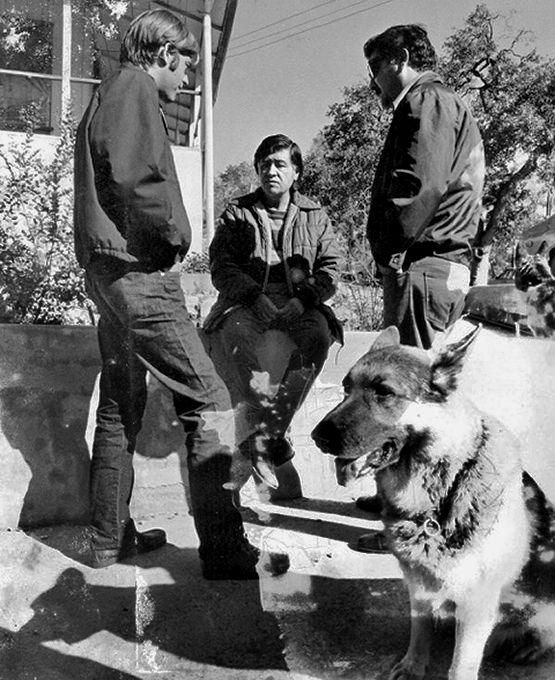
Fred Ross, one of the nation’s leading labor organizers who began his work at an early age in the lettuce fields of California alongside Cesar Chavez, but whose work had an impact far beyond labor organizing on both a national and international level, has died.
He played a pivotal role in successful efforts to propel Congressional action to change policies propping up oppressive governments in Central America, advocating to accelerate the naturalization of legal immigrants in the US, and in getting House Speaker Nancy Pelosi elected to Congress for the first time.
He died of cancer at his home in Berkeley, California, just weeks after celebrating his 75th birthday and receiving tributes from hundreds of friends and colleagues.
One tribute came from former U.S. Labor Secretary Robert Reich. “You have comforted the afflicted, and afflicted the comfortable,” he told Ross. “Your boldness and vision have been a source of inspiration to me and huge number of other people, working for social justice, labor unions, and the hopes and dreams so many people have for a better life.”
Ross’ brilliance was to take what he learned from Chavez as well as his father, Fred Ross Sr., himself a legendary organizer, combine those lessons with a savvy use of the media and field campaigns of local volunteers, to put pressure on state governments and Congress to advance a variety of causes – and when necessary, help elect candidates sympathetic to those causes.
One of those candidates was Pelosi, then a leader in the Democratic National Committee. Using some of the techniques learned in his work with the United Farm Workers, he organized the Get Out the Vote campaign for her first successful run for Congress in 1987 in San Francisco. Ten years later he joined forces again with Pelosi as her district director in her Congressional office in San Francisco.
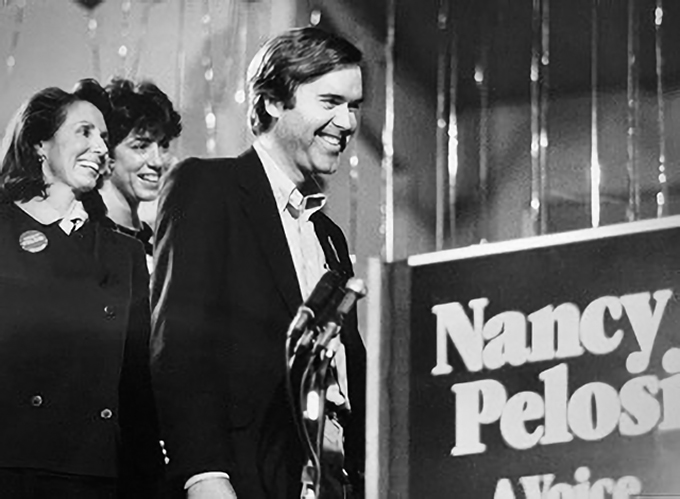
“I personally benefited from Fred’s organizational mastery: translating his policy goals into effective political action. Without his early support and brilliant leadership organizing the ground operation of my first campaign, I would have never become a member of Congress.” Pelosi said in a statement.
Organizing “in my DNA”
Born in 1947, Ross began work as a full-time organizer with the United Farm Workers (UFW) in 1970, the year of the historic general strike in the lettuce fields of Santa Maria and Salinas in California’s Central Coast,
Throughout his career, Ross employed the house meeting, a hallmark grass roots tactic developed by his father while working with the Community Service Organization, a Latino civil rights group Ross Sr. co-founded in 1948 related to Saul Alinsky’s Industrial Areas Foundation. It involved setting up meetings with small groups of people in their homes to make change happen in their communities or in later years to organize unions.
Years later, Ross reprinted many of his father’s sayings and tactics in a booklet called “Axioms for Organizers”which was widely distributed in English and Spanish throughout the United States and can be found in union halls and community meetings throughout the Country.
His mother Frances Ross, an original “Rosie the Riveter,” was a shop steward in a World War II plant in Cleveland, Ohio. She fought to help Jewish doctors immigrate from Nazi Germany. She was a pioneer in the mental health field and was the first women hired to be a lobbyist in Sacramento, state capital of California.
“So, fighting and organizing for racial and economic justice is in my DNA,” Ross said on many occasions. He acknowledged that he had gotten into a fair amount of trouble doing his organizing work — “good trouble, as John Lewis used to say.”
He recalled being knocked unconscious by a grape grower during a farm worker election and being shot at by a security guard at a supermarket. “Luckily he was a bad shot,” he quipped.
By his own count, he had been arrested 39 times, “mostly for good causes.”
Organizing with UFW
In early 1975 Fred conceived of, and organized a 110-mile march against Gallo wines that began in Union Square in San Francisco and ended with at least 10,000 farm workers and supporters at the company’s headquarters in Modesto in the Central Valley of California. At the time, it was estimated that Gallo Wines sold 1 in 3 bottles of wine in the United States. The UFW had by then been dismissed by some in the media as a “romantic cause” because it was confronting the powerful alliance with the Teamsters union that growers forged to suppress farm workers’ support for the UFW.
“That infuriated me, because I knew it wasn’t the case,” Ross said in an interview in October.
One of the other motives for the Gallo march was to put pressure on then-Gov. Jerry Brown to negotiate and push through the Agricultural Labor Relations Act, which was enacted in June 1975. It was the first law of its kind in the nation establishing the right of farm workers to organize, vote in union elections, and bargain with their employers.
Changing U.S. Policies on Central America
In the 1980s, Ross led Neighbor to Neighbor, a grassroots organization initially focused on dealing with the plight of refugees from El Salvador, Nicaragua, and Guatemala. It grew into a much larger effort to address U.S. policies in those countries that contributed to the refugee problem in the first place. “No one had developed a successful political strategy to challenge these policies in Congress, “ Ross recalled.
Neighbor to Neighbor sent organizers to swing congressional districts around the country to elect representatives critical of the Reagan administration policies in Central America, and to put pressures on incumbents to change their positions. These efforts played a part in ending aid to the Contras, the U.S. backed rebel forces in Nicaragua, and helped elect three women to Congress backing those changes. Rep Louise Slaughter, D-NY, served in Congress from 1987 until her death in 2018. Rep. Anna Eshoo, D-Palo Alto, also elected in 1987, is still in Congress.
Helps Elect Pelosi to Congress
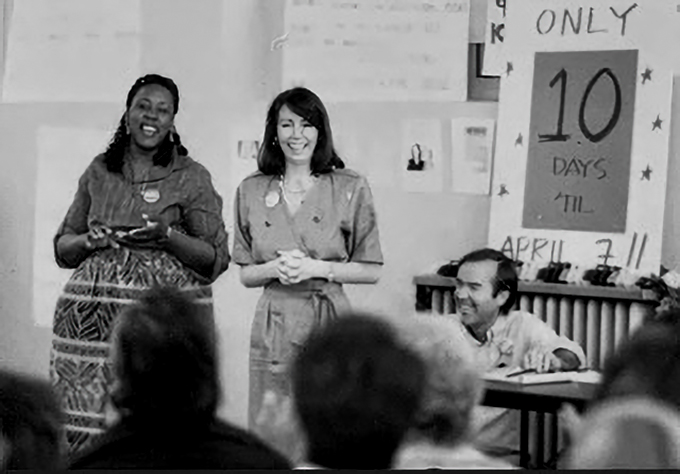
The third woman was Nancy Pelosi, who asked Ross and Neighbor to Neighbor to run her get out the vote campaign. She was familiar with Ross’ work around Central America, as well as his leadership role in then-Mayor Dianne Feinstein’s successful defeat of a recall campaign against her in 1983.
Again, using tactics honed during his farm worker organizing days, Ross helped organize 118 house meetings, and enlisted over a thousand volunteers. As Ross recounted it, Pelosi’s father Thomas D’Alesandro, a former mayor of Baltimore who knew the value of neighborhood-based precinct organizers, sent Pelosi’s brother Thomas, generally called Tommy, to San Francisco “to make sure that Ross and this crew knew what they were doing.”
On one Sunday, Tommy, who also had served a term as mayor of Baltimore, tagged along with candidate Pelosi to 17 house meetings held over a 12-hour period. Ross also brought out a chart indicating that the campaign needed to identify 5,000 more voters and get 3,500 of them to vote.
At the end of the day Tommy called his father back in Baltimore to report that “Dad, they’re doing it better than we did. Nothing to worry about.”
Pelosi won her race by a narrow margin, embarking on a decades-long career that led her to historic terms as House Speaker. “You will always have my deepest gratitude as one of my earliest and most significant supporters,” Pelosi told Ross on his 75th birthday.
After the defeat of Contra aid, Neighbor to Neighbor shifted its focus to El Salvador, to pressure the government there to withdraw its support of death squads. To that end, Ross led a drive to boycott Salvadoran coffee, one of the country’s most lucrative exports, which he argued helped underwrite the military regime there.
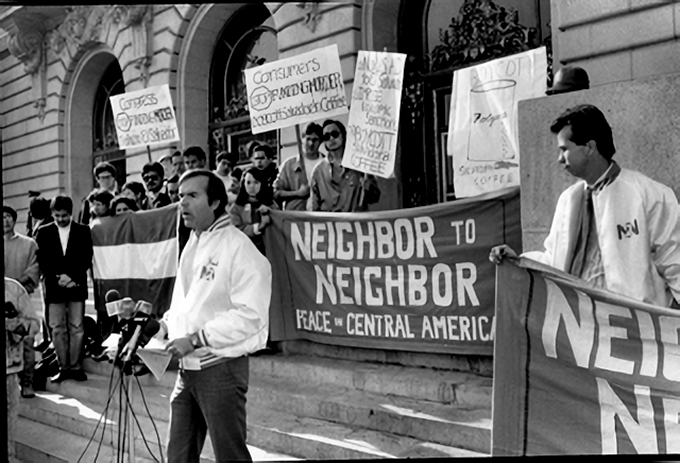
A key turning point was when the International Longshoreman’s and Warehousemen’s Union under its president, Jimmy Herman, endorsed the boycott. Longshoremen refused to cross picket lines set up by Neighbor to Neighbor up and down the West Coast, including at its last stop in Long Beach. As a result, the Ciudad de Buenaventura ship was unable to off-load its cargo of 34 tons of Salvadoran coffee and was forced to sail back to El Salvador with the coffee still in its hold. That effectively sealed off the West Coast to Salvadoran coffee imports for the next two years.
The threat of further economic damage played a part in forcing the Salvadoran government to the negotiating table, and in 1992 the counterinsurgency war against the FMLN, a leftist guerilla organization, came to an end.
Helping Legal Residents Become Citizens and Voters
In the 1990s, Ross embarked on a campaign to shorten to six months the time it took legal immigrants to become citizens after they applied, and then to register them to vote. In the aftermath of Prop. 187, the anti-immigrant initiative backed by then Gov. Pete Wilson, he helped launch the Active Citizenship Campaign which, with the intervention of then Vice President Al Gore, successfully put pressure on the Immigration and Naturalization Service to speed up the naturalization process.
“We not only played a tangible role in putting pressure on the INS to help thousands become citizens in time to vote in that next election, but more importantly, to become a lot more engaged in the whole political process,” recalled Ross. “That was the beginning of a real breakthrough in continuing to build Latino voting power in California in the aftermath of Prop 187.”
Training “Organizing Stewards”
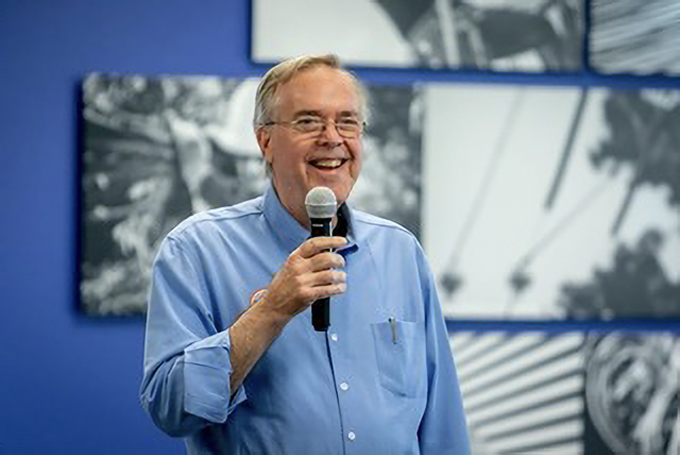
In 1998, Ross returned to his labor roots by organizing health care workers for the Service Employees International Union, working closely with Eileen Purcell, whom he described as “my organizing partner of a lifetime.” For 13 years with the International Brotherhood of Electrical Workers Local 1245, he developed a nationally recognized program to train union members to go beyond being stewards that handled union affairs, but to be organizers while keeping their regular jobs at Pacific Gas and Electric. These “organizer stewards,” as Ross called them, would volunteer on non-work time to fight anti-union right-to-work legislation or work in electoral races in their own states or elsewhere. If necessary, they would take a leave from their regular jobs while being paid by the union to do so, but always return to their regular jobs with PG&E. Among the races these organizers participated were the Senate campaigns of Rev. Raphael Warnock and Jon Ossoff in Georgia two years ago. Their election returned control of the Senate to Democrats after a half dozen years with a GOP majority.
Most recently, Ross was working on producing a documentary film on his father that underscored the critical role of organizing, with an emphasis on one-on-one relationships that could be forged to build collective power. Even after being diagnosed with a terminal illness, he worked tirelessly to raise funds for the film, which is being directed by Ray Telles.
As the United Farm Workers said in a tribute, “His father Fred Ross Sr. had remarkable accomplishments. But perhaps his best legacy was Fred Jr. Colleagues over many decades said Fred Jr.’s organizing talents matched anyone’s, including Cesar and Fred Sr.”
“As with his father, Fred Jr.’s labors were never about himself,” the UFW tribute stated. “He was always about empowering others to believe they were responsible for the progress they won. Fred Jr.’s nature was ceaselessly positive; he always thought things could be done.”
Throughout his life, Ross exemplified the principles of organizing he wrote about in an introduction to Jacques Levy’s Cesar Chavez: Autobiography of La Causa. “I learned from Cesar Chavez and my father that the organizer works behind the scenes, patiently asking questions, listening respectfully, agitating, teaching new leaders, pushing them to take action, and creating hope con ánimo, with great enthusiasm. The organizer finds people one at a time, teaches them to develop their own powerful voices, turns their anger about injustice into hope by encouraging them to take action, raises hell, stirs up trouble and has fun doing it.”
Ross, a longtime Berkeley resident, is survived by his wife, Margo Feinberg, a prominent labor attorney, counsel to many significant labor organizing campaigns and author of innovative local legislation geared to enhance the rights of workers; their two children, Charley and Helen Ross; brother Robert Ross and sister Julia Ross; and a legion of friends and family members and generations of organizers.
In lieu of flowers, the Ross family asks that contributions go to the Fred Ross Project. Written condolences to the family may be sent to FredrossMemories@gmail.com
.
For more information, or questions, please email Louis Freedberg at: louisfreedberg@gmail.com
…
Jon Melrod – Labor Lessons Learned
By Peter Olney
I reviewed Jon Melrod’s book, Fighting Times: Organizing on the Front Lines of the Class War, for In These Times—but I wanted to draw out more of Jon’s important lessons for the new generation of working-class organizers, so I sat down with him at his home in Northern California and interviewed him. Jon is a friend and comrade who continues to fight the good fight by advising young comrades on how to do working-class organizing. He has made connections with young organizers at both Starbucks and Amazon. He has much to say about how to conduct daily battles over the countless workplace abuses of capitalism and how to make the linkages between those skirmishes and the broader battle for democracy and against capitalism.
“you’ve got to be there for the long haul and you’ve got to be willing to roll with the punches.”
Jon Melrod
Peter Olney (PO): After your time as a student militant at the University of Wisconsin you decided to take a working-class job and organize up the road in Milwaukee. Tell us about the plant where you landed in 1972.
Jon Melrod (JM): I went to work at American Motors in 1972. In 1969 there had been 14 wildcats in one week at the Kenosha and Milwaukee American Motors plants. So I mean, you know, every time there was a grievance the Chief Steward, who was the Chief Steward of the whole factory, would say, “Let’s go on out until we get it settled.” And I have a great picture from 1973 of all these middle-aged white guys in Kenosha holding signs saying, “Wildcat strike,” “Paint Department on strike.” So I said this is the right place to be. If you wanted to be a rebel and you wanted to fight for something to change the world, you went to work at American Motors.
This was a very historic plant, the first auto plant organized in the United States. In 1933, a chief steward, a very left-wing militant named Paul Russo, went off his job to collect money for a worker whose house had been burned down. The foreman ordered him back on his job. And he said, “No, I’m taking a collection for a union brother who lost his house.” So they fired him. When they fired him, the whole Trim Department sat down. It was the first sit-down in auto, before Flint.
After that, the strike spread to Racine and Milwaukee and the Kenosha plant shut down. At that point, the company was forced to recognize officially the first union in auto and it was the first written contract in any auto plant in the United States. It was a one-page—basically just recognizing the union. But the way the union ran the shop was it was all past practice. So whatever we had established as past practice became the way that the relationship between management and the union functioned.
PO: How did you begin to establish your credibility at the plant?
JM: One of the things for new organizers today—and we’ll talk about this more—is people respect somebody who works hard, who’s willing to stand up for themselves, who’s not afraid of physical challenges. I’m not a very big guy and that really worked to my detriment. You know, the first leaflet we put out at the plant gate I was standing out in front of the door and fucking all of a sudden this bucket lands on my head full of cleaning fluid. And I’m covered in cleaning fluid. My eyes are stinging. And you know, I ran up – I knew where it came from because on the fourth floor in the Cushion room where they used to make the seat cushions, that was where the union hierarchy worked because it was easy. It was off the line and it was all white and they were all Korean War vets and they were all very conservative.
I came running up four flights of stairs and I ran into the Cushion room and I was, “Which one of you mother fuckers is chicken shit enough to dump something on my head when you can’t be seen?” And of course, everybody shut up and nobody said anything. But the fact that I stood up to them and that I was back out at the gate that afternoon handing out flyers to the second shift showed them.
It’s a rough and tumble world in the working class, you know? You’re not a student any longer writing papers for a living, you’re working for a living and you’ve got to stand up for yourself. And that became an important lesson many, many times from then on.
PO: So here you are in an auto plant and correctly focused, I think, on the battles that these workers are confronting day-to-day in their factory lives. How is there a connection between fight over drinking water and socialism?
JM: Well I think in every struggle in a factory, no matter how small or how large, there’s much larger implications. Because it’s really part of a class war. The title of my book is actually Fighting Times: Organizing on the Front Lines of the Class War. For example, they came around one Saturday and they said the president of the union has said that we need to get a Saturday of overtime in—there’s not enough cars in the dealerships. So mainly the young guys and I, we used to party hard every Friday and Saturday night. And we said damn, if we have to work on a Saturday, that’s the end of our partyin’ life. And I went and looked back at the contract, which was really this thick black book of probably 300 pages of codification of work rules, and it said you have the right to refuse overtime.
So, I went to the guys and I said, “Look, we don’t have to work overtime.” And we ran off copies of that page in the contract and handed it out. Next morning when they came through to tell everybody, “You’re coming in on Saturday; just want to make sure you know it; this is your notice,” everybody said, “We’re not coming in. We’ve got the right to voluntary overtime.”
And the word spread, and they couldn’t get a workforce, okay, and they were threatening to discipline people, they were threatening to fire people. People were saying we’ve got a right to voluntary overtime. Here again you have this class struggle that’s always at work. The company wants cars; you want a decent fucking life where you’re not a slave to your job. Capitalism means you’re a slave to your job, you know. With a militant union, at least you can put up a hell of a good fight. And they had to cancel the overtime.
PO: That’s a pretty rich tale Jon. Can you give us another example?
JM: Sure. The company announced they were going to speed up the assembly line. They were going to add about three cars an hour and not change our work assignments at all. Three cars an hour is a huge addition to the amount of work you have to do. And we put out a leaflet. Didn’t know what we were doing. We got an old mimeograph machine and we wrote up a leaflet that said, “Speed up kills. Fight speed up.” We handed it out and all of a sudden the factory was in an uproar, ’cause this woke up the old timers.
And the old timers said, “Do you know how we fight speed up? We ride the line.” I said, “What does it mean you ride the line?” They said, “That means you work to contract. You work no faster than the normal pace,” which was what was in the contract. “You can only be expected to work at a normal pace.” So, they taught us younger guys stay in the car until you finish your whole job, even if it pushes you two work stations down the line and that pushes four more people down the line. And meanwhile, it means that nobody’s getting their job done and everybody’s throwing the parts in the car, so there’s no cars that are getting built as a completed car. They’re all on the repair areas, stocked up.
You realized in doing that that there was a tremendous power that people had, that without your giving them the right to control your labor power you in fact have the power and that’s an important lesson that applies to society in general. You begin to realize that it’s workers that make all of society run and it’s capitalism that exploits workers to the benefit of the owning class.
PO: You got fired several times for your union work. In 1973, you ended up going to the NLRB. What happened?
JM: So, I went to the National Labor Relations Board and luckily the officer doing the interview was actually quite sympathetic. And I said all right, well we’ll see what happens. But even while I was fired I kept going to the plant basically every week to keep working with people, to help them with the 1974 auto contract. I stayed active. You know, I didn’t go home. The union told me go home and wait and we’ll see what happens. But I stayed active.
And about nine months later, the morning newspaper had a big article, “AMC ordered to rehire two fired workers,” and the Labor Board had ordered them to rehire me but in really strong language. The Labor Board blasted them for using McCarthy-like tactics to spread rumors that we were communists. And in fact, we had been engaged in protected activity.
So, they ordered me to be rehired. I now have a memo that the company and the FBI had collaborated on that they were not going to rehire me. They said, “No matter what the court says, we’re not rehiring Melrod. He’s too much trouble.”
But after two and a half years, the Seventh Circuit—that’s the Court of Appeals, the Federal Court of Appeals—ordered American Motors to rehire me. And at that point they really had no choice and they put me back to work.
PO: You said something that caught my attention when you said, you know, “After I was fired, I didn’t disappear. I’d show up at the plant.”
JM: One thing that I think is really important for young people to understand, particularly in this world where tweets are like 200 words and everything moves fast and there’s immediate satisfaction, you’ve got to be there for the long haul and you’ve got to be willing to roll with the punches. When I first ran for steward, I drove three guys in my car out to the voting in the union hall and I was the fourth. And the next morning I went to look at the bulletin board where they listed the returns on the steward election, and my name was on the very bottom. I only had gotten three votes. One of the guys I drove didn’t even vote for me.
And it was pretty demoralizing. I mean, I kind of slunk away, you know, from the crowd looking at the returns and I had a day to think about it. And it led me to a lot of important conclusions. ‘Cause you’ve always got to be thinking about what you did right and what you did wrong. And one of them was that I had not been involved enough in the day-to-day fights. In other words, I was always at the gates with the Milwaukee Worker and political flyers. We organized people to go to May Day. We organized people to march against the Ku Klux Klan in Tupelo. And that’s all good and that’s important to bring in those political issues. But if you want to represent people, they’ve got to see that you’re going to stand up to the company.
And from that day on I said I don’t care if it’s a spill of grease on the floor, I’m going to make a fight about it or I’m going to start a petition about it or I’m going to get a group of workers to go confront management on it. Because it doesn’t happen overnight. You don’t get elected the first time. You don’t always win the union vote the first time. You know, I mean, this is serious business and if you’re trying to fight a serious class enemy that’s determined to keep unions out and to keep wages down and to keep people working for as many hours a day as they can, you know, then you’ve got to be ready to throw down and take that on.
PO: When you were in the UAW, you began what would be a long fight for “one member, one vote” in the union. Leaders of the union were historically chosen at convention by delegate votes rather than direct election by the members: one member one vote.
JM: In 1983 we were running a slate for the convention, International UAW convention, and we looked around to figure out what was the most important issue that broadly affected locals around the country. And we decided it was the issue of democracy in the union, because if you don’t have the right to vote for international officers, you have an autocracy. And [UAW President Walter] Reuther was able to build something called the Administration Caucus, and everybody who made it to the top leadership had to be a member of the Administration Caucus and even to be an international rep. At that time there were about 350 full time international reps in the UAW had to be a member of the Administration Caucus.
PO: And even regional directors, right?
JM: And even regional directors. So we took that issue to convention. Earlier we had helped form Locals Opposed to Concessions, LOC, with militant locals in Detroit. And those locals had opposed concessions at Chrysler and at GM and at Ford. And we had developed relationships with the leadership of those locals. So we really went out to them to build this movement for one member, one vote. And for them it wasn’t just a matter of winning the rank and file’s right to vote, but it was also a way to punish the International Union for having granted concessions.
So, we took it to a membership meeting and everybody in the local supported it. There were a thousand members at that meeting who voted to write a resolution to be delivered to the convention Resolutions Committee supporting the concept of one member, one vote. With that vote of the membership was also an endorsement that Local 72 out of Kenosha lead a national push to establish one member, one vote.
Once it became the official position of the union, the local gave us a budget of $100,000, which in ’83 was a lot of money. And we forced the International to give us a mailing list of all the locals in the country, and we spent hours and hours sending out letters to every local, to every convention delegate, local—the head of their delegation would receive a letter asking them to pass resolutions supporting one member, one vote.
And it took off fairly well, particularly in Canada. When we got to the convention there was enough support that even thought the International would’ve liked to shelve the whole issue, they were forced to agree to bring it to the floor. So I was able to present a very long, detailed resolution on why it was so important that the membership had the right to vote, and if we had been part of the Civil Rights Movement like the UAW had, why couldn’t we apply that to the local’s membership right to vote. Afterward [then-UAW President Douglas] Fraser called the question and put it to a voice vote and we probably had around—he said 300—it was probably around 500 delegates who did vote for the resolution. And I remember how proud I felt when Fraser told the media that was the most difficult fight the International has had to rally its representatives to do battle on.
It laid the groundwork later for, as you mentioned, Jerry Tucker, and I believe it was New Directions that brought it to the convention in ’86. And now most recently, after they sent 11 of the International officers to jail for all kinds of horrible crimes of embezzlement and working with Chrysler and being paid by Chrysler, the membership decided enough is enough and a legal case was brought and a vote was held on whether we’d switch to the referendum system, which we did, and as you said, right now the membership is finally voting.
PO: Yeah, pretty exciting.
JM: It is pretty exciting, and it portends well for changing the responsibility of the leadership to the membership ’cause there isn’t that, you know, buffer between them any longer.
PO: How do reflect now on your approach to politics then? Milwaukee has a system of wonderful public parks. Where did that come from and would that have been a political reference point, the Sewer Socialists, the Victor Bergers, open socialists elected to Congress in the 1910s and ‘20s? Could we have had a much more organic relationship between the battles we were waging on the shop floor and municipal and state and federal politics and power?
JM: I think you’re raising a really good point. That is something that I’ve looked back upon and been critical of myself. I think that our political viewpoint was basically elections don’t matter, politicians don’t matter. Be it on a local level or a national level, it’s just not something that we involve ourselves in. And that was a huge mistake because as you say, Milwaukee had been a socialist bastion up until maybe even the early ‘60s. And you’re right. It had one of the nicest park systems in the United States and that was because the socialists had created that. And it also had at that time a very good public school system that had been created by the socialists. And we really ignored that whole part of history to our own detriment and to the detriment of our political organizing.
I mean, right now, for the first time in 80 years, two socialists, open socialists, have been elected from Milwaukee to the state assembly. Now this is the same state where they’ve got Ron Johnson, the arch-Republican autocratic, drink Listerine and it’ll fight COVID, as their senator. So, you’ve got a real dichotomy going on right now between a rebirth of political left-wing progressive organizing and a very powerful right wing. And part of the problem is that the unions don’t have the strength that we once had in Wisconsin, because were the unions in power there wouldn’t be such a movement for Trump. I believe this 100%.
PO: Now we have an African American named Mandela Barnes running for Governor of Wisconsin?
JON: Mandela Barnes, I’ve heard him speak. He’s a very progressive guy. He’s part of this new wave of younger progressive, fair-minded politicians. Both his parents came out of unions. Both his parents were workers, came from the heyday of the union movement in Wisconsin, and he’s definitely got a very different orientation than the Republican candidate.
The fact that this local endorsed Mandela Barnes through their political organization in the UAW shows you that it makes a big difference when you have a union that teaches people the strength of the power of unions and the power of working people politically. It’s not like we didn’t talk about history in our day. We talked about history but it was about Harold Christoffel, who had been the President of the Allis-Chalmers Union, had formed the union actually at Allis-Chalmers and led the longest strike, which went on for one year, at the Allis-Chalmers plant outside of Milwaukee. And he was a communist and during the McCarthy period he refused to respond and was given a year in jail. Now we talked a lot about him and Allis-Chalmers but we didn’t talk about it in the context of, you know, local elections, city elections, and that was a mistake on our part.
PO: Thank you Jon for your time and mostly for writing this very useful book. I hope readers of Convergence and the Stansbury Forum will pick up a copy from: PM Press.
50% off with Holiday sale: coupon code: GIFT
Fighting Times: Organizing on the Front Lines of the Class War, by Jon Melrod. PM Press, 2022
This has been a joint Stansbury Forum – Convergence post. We urge you to look at Convergence’s site for some amazing reads
…
Highway to Hell
By Steve Chapple
“We are on a highway to climate hell with our foot still on the accelerator,” UN Secretary-General António Guterres said on Monday as the COP27 climate conference began in Sharm El-Sheikh, Egypt. How firmly humanity’s foot stays on that accelerator will depend partly on the outcome of midterm elections in the United States.
Andy @Revkin in in his excellent SUSTAIN WHAT Substack suggests we should move on to the real problems in America before we start yammering about the next horserace, the 2024 elections and whether Biden will run or Trump will run, and so forth, but we at HOT GLOBE™ simply can’t resist a Friday Fish Wrap about this week’s electoral puzzle.
THERE WAS IN FACT A RED TIDE for Republicans but to put it in scientific terms, it turned out to be a red tide more like Kerenia brevis, the poisonous red tide that kills manatees and sickens swimmers and, evidently, puts off independent voters. too.
Republicans in 2022 thought all Americans were concerned about was inflation, gas prices and crime (even though 8 of the 10 high crime states are all Red) and forgot that maybe hobbling reproductive rights and reducing Social Security and Medicare might bother many voters. That much is talked about but what is only now coming to be understood is that a real youth wave came to shore this week with Gen Z’ers skate-boarding to vote in historic–nay!—record numbers.
The issues most important to these activist kids riding the curl (to keep our wave metaphors flowing): Guns, Climate, and Abortion, as reported in Covering Climate Now:
Youth organizers from the climate, gun violence, and other progressive social movements predicted a “youth wave” election-night surprise, Mark Hertsgaard* reported in The Nation (“Can Gen Z Save the Midterms for the Democrats?”)— and the youth were right. [Point of liquidity: I’ve known the Norwegian-American journalist Mark Hertsgaard since Rio Eco 92.]
Exit polls show that 63% of young Americans voted for a Democratic candidate for the US House, while 35% of young Americans backed Republican candidates, Rachel Janfaza reported for Teen Vogue. The strongest support came from youth of color, with 89% of Black youth and 67% of Latino youth voting for a Democratic candidate.
Also, a certain former President seems to have stayed too long at the beach–like a wet fart. Even Foxies Rupert Murdoch and son Lachlan gagged at the smell. (See “Murdoch Outlets Turn on Trump After Midterms” in the National Review.) The Murdochs own “The Network” (Fox News, Wall Street Journal, New York Post, ad nauseam,) literally and symbolically. When the Trump Show begins to hurt the ratings, well, bottom line this is what those immigrants, Rupert & Son, are all about, their $-money-$ and so when the numbers fall, time to box up the frothing apprentice like the old silent screen star Norma Desmond in the movie Sunset Boulevard, and send him packing to his luxury retirement home.
Problem is, Mar-A-Lago is at sea level and this election week, as a rare November hurricane crashed ashore, residents of Palm Beach were put under an evacuation order. It is delicious to think that Ron De Sanctimonious may have signed off on the evacuation order and to wonder whether his 2024 rival Trump refused to go, seeking refuge on the third floor to wait out the storm, in his tanning bed.
Have Republicans Always Been Toxic for the Environment?
Hold the guffaws. ‘Twas not always thus. Teddy Roosevelt founded many of our national parks. Gilbert Pinchot did the same for national forests at least until the 1950’s post-WWII building boom when the forest service came up with the “mixed use” euphemism which pretty much means more roads and more logging. There were always wilderness mavericks and conservative outdoors folks like Northern California Republican Pete McCloskey, Adlai Stevenson Republicans such as David Brower, who saved the Grand Canyon among many other wild places of exquisite beauty (“In wildness is the preservation of the world,” as the now mildly canceled John Muir put it) and don’t forget America’s most Shakespearean President, Richard Milhous Nixon and his convicted domestic policy advisor John Ehrlichman, who, nevertheless, did much to develop the Environmental Protection Agency and the Clean Water Act, partly out of a love of nature but mostly to garner votes in a very different time. On the negative side Herr Ehrlichman criminalized marijuana and psychedelics in order to put millions of black, brown, and hippie youth in prison. Those folks didn’t much like the Vietnam War and rarely voted for the boss.
Climate makes for strange bedfellows. The sun sets over us all, and only the most philistine Republican are unable to appreciate a green flash or a bugling elk.
At an early EPA banquet, Nixon once even turned to Russell Train, who was the second head of the EPA and the founder of the World Wildlife Fund, and made a plea for climate justice in the inner cities.
Then came the Old Tree Cutter himself, Ronald Reagan, and his Interior Secretary James “Paul Bunyan” Watt. Reagan said trees caused more air pollution than automobiles, which gave rise to the ”killer tree” meme of early late-night comedy.
It’s been downhill ever since, as 85% of political contributions from fossil fuel companies go to Republican candidates so that they might continue to obfuscate the role of fossil fuels in global warming. In my own district in California, the Fighting 49th, Republican candidate Bryan Maryott was funded by big oil after Democrat Mike Levin co-sponsored the Big Oil Windfall Profits Tax. At press time Mike is leading by 3 points.
By the way, this “Highway to Hell” reference is intriguing (click the link for the official recording.) UN Secretary-General António Guterres graduated from the Technical University of Lisbon in physics and electrical engineering in 1971, before later becoming prime minister of Portugal. AC-DC wrote “Highway to Hell” in 1979 with Aussie Angus Young contributing the killer guitar riff. Was Guterres, then 29, rocking out in the clubs of Porto to AC-DC and so retained the reference in his mind? Data point: probably not. He was part of the “Club of Light” in college, a Catholic Franciscan group. But who knows? Remember that our last Substack featured Dr. V. “Ram” Ramanathan, who influenced Pope Francis to issue his Climate Encyclical.
That’s it for HOT GLOBE™ ‘s Friday Fish Wrap on the elections.
NEXT FRIDAY we walk down the hall from my office at the Scripps Institution of Oceanography and begin An Informal Chat with Ralph Keeling about how important a part “carbon land sinks” play in global warming compared to the abject nakedness of fossil fuel burning. Ralph works on the big picture and like Ramanathan, he’s worried. “We’re locked into such massive changes that it would be irresponsible not to be working really hard to get ready.”
I ask him what his father Charles Keeling, he of the Keeling Curve, might think:
“My guess is my father would be horrified by the politics of it all,” Ralph Keeling.
We are now at 416 parts per million of CO2, as measured by the Keelings’ Curve, speeding down (I can’t resist) a highway to—well, let’s make some changes, kids, and quick, before it’s too late.
Don’t forget to subscribe and share. Thanks.
…
Steve Chapple runs HOT GLOBE
On The State of the Nation (and large part of the world). Some Reflections on the Election.
By Mike Miller
The pessimists (I was one) weren’t right, but neither were the optimists. At this writing, it looks like we’re in for more of the same in the nation’s politics. The American electorate is worried with many voters saying and doing contradictory things.
But let me focus on some optimistic notes. Given what many expected, the Republican victory in the House is Pyrrhic. It’s also testimony to Speaker Nancy Pelosi’s leadership. Given the defeat of a number of Trump-backed Republicans, the election may unleash a war between De Santos and Trump, which would benefit the country. There is no question: Democrats did far better than expected.
If Democrats win the Nevada and Arizona Senate seats, it will strengthen the Nevada UNITE/HERE Local—a good thing both for labor and the country. For example, let’s hope the new Teamster leadership develops an electoral program like that of the Las Vegas hotel, restaurant and entertainment workers. In Arizona, a strong on-the-ground operation contributed to the Democratic victory. The damage done by Andrew Cuomo to the State Democratic Party may create new opportunities for the Working Families Party in New York. Where the issue was on the ballot, anti-abortion rights propositions were defeated; where it was a key campaign issue it helped pro “choice” candidates as well.
Candidates are important. John Fetterman’s Pennsylvania win demonstrates that a politician who cultivates a relationship with voters can translate that into victory while, at the same time, having a history of progressive stands and victories, including: criminal justice reform, legalizing marijuana, immigration reform, LGBTQ rights, environmental racism and economic justice.
Here are some bigger picture thoughts on what it will take to significantly change things.
Problems
Democrats, Labor, Socialists, Social Democrats, et al, no matter what the country, failed for many years to deliver on election promises. Over the longer term, and the short term as well, voters don’t forget.
Faced with “redlining” (broadly defined here as withholding money to get desired political results) in a variety of forms by investors/lenders/global financial institutions and others with $$, or the control of money, these leaders concluded they had little alternative—Syriza is perhaps the best example; its capitulation to European demands to pay its debt no doubt contributed to its political demise.
What if instead of getting bogged down in “negotiations” that weren’t real, Syriza had won the cooperation of longshore unions across the globe to refuse to unload a product targeted for boycott of a highly visible German brand? Or what if it had organized allies to pull deposits from a targeted European bank. Or… The point being that Syriza got trapped in what Finance Minister Yanis Varoufakis later characterized as non-negotiations: it was clear in retrospect that the lenders were not going to make substantial concessions.
Obama’s bank bailout that left homeowners in the lurch while bailing out bankers is another example. Nor was that an exception to the rule: he has a long history of ties to the FIRE (finance, insurance and real estate) complex in Chicago.
These failures leave incumbent social democrats, liberals, “progressives” and socialists the objects of skepticism from those whose economic interests they slightly served (at least better than the Right), if they served them at all. American voters in the industrial Midwest know that Bill Clinton brought them NAFTA. (You can’t successfully pursue immigration reform without stemming the tide of Mexican, Central and South Americans forced from their farms, homes and jobs by American support for corporate-defined “globalization”.)
Confidence in Institutions
Here’s how Gallup sums up its current annual survey of confidence in American institutions: “Americans’ confidence in institutions has been lacking for most of the past 15 years, but their trust in key institutions has hit a new low this year.”
Most of the institutions Gallup tracks are at historic lows, and average confidence across all institutions is now four points lower than the prior low.
“Notably, confidence in the major institutions of the federal government is at a low point at a time when the president and Congress are struggling to address high inflation, record gas prices, increased crime and gun violence, continued illegal immigration, and significant foreign policy challenges from Russia and China. Confidence in the Supreme Court had already dropped even before it overturned Roe v. Wade, though that ruling was expected after a draft opinion was leaked in May.
“The confidence crisis extends beyond political institutions: a near record-low 13% of Americans are satisfied with the way things are going in the U.S. Confidence in institutions is unlikely to improve until the economy gets better — but it is unclear if confidence will ever get back to the levels Gallup measured in decades past, even with an improved economy.”
The problem has become deeper than economic performance. The gap between promises and results alienated vast numbers of voters, especially white working, and lower-middle class, who then were vulnerable to the appeal of the man on the white horse. “I, and only I, can solve these problems,” said Trump, as did his Swedish, Italian, Hungarian, Polish and other counterparts.
Powerless to attack those with the real power, this constituency needed someone to make them feel better — attacking “The Other” served them and right-wing politicians perfectly. For example, few Democratic politicians call out NAFTA as a major source of Mexican immigration to the United States. To do so would require attacking a history of Democrats supporting the treaty and “globalization” of which it is a part. Lord Acton’s warning about the corruption of power needs to be balanced with the corruption of powerlessness which damages the human spirit and creates the soil Donald Trump tilled.
Civil Society
What follows when civil society institutions erode and disappear?: isolation and the destruction of community. Social media are non-stop. They feed the anger. The alienated can find relief by blaming The Other: “kick the dog” when you can’t kick its master. For those in power, divide and conquer is a useful strategy.
It is a mistake to dismiss all this as scapegoating. “I want to be somebody” is an expression of being recognized, of meaningful membership. And that is what is being shouted out now by people who feel ignored, abandoned, voiceless, and without hope for the future. (They were depicted by Hillary Clinton as a “basket of deplorables,” and Barack Obama said during his run for President, they “cling to guns or religion or antipathy toward people who aren’t like them…as a way to explain their frustrations.”) Whatever elements of validity there might be in his argument, a Presidential campaign is not a seminar.
The erosion of community, the increased isolation and loneliness of people, the powerlessness that arises when one does not belong to a democratic collectivity that offers a powerful voice—these are among the results of the erosion of civil society. The causes are long-term, and the solutions will not come overnight. No single election campaign, or even series of them, can rebuild what has been torn-asunder over a long period of time.
In a community, people talk with one another; there is deliberation among them. Organizations to which they belong, and in which they have confidence, have the capacity to evaluate political proposals and offer alternatives. But unions, for example, have largely become service and advocacy organizations: they provide things for members and act in their behalf, rather than serving as vehicles in which members argue, discuss, deliberate, make compromises and act collectively for themselves. Instead, a member “files” a grievance which may take years to resolve and is done without his/her participation. At contract time, full-time union officials haggle with management over the terms of a contract. The process takes place in downtown hotels; participation by members in “glass house” negotiations is, for the most part, a thing of the past. The contrast is expressed in a familiar labor organizer complaint that “members act like their dues bought them an insurance policy”. When they’re in trouble, they want the union — understood as a third party — to provide them benefits.
Ironically, the better full-time elected leaders and paid staff perform the “representation” task, the more difficult it becomes to persuade members they have to do anything more than vote in public and union elections, and pay their dues. When profits were growing and markets expanding, some sharing of the benefit with workers worked for major corporations. But with slowdown and foreign competition, things got tight.
Even given the above, union membership has an impact on political preferences. But the private sector is now down to about 6%! Stirrings in places like Amazon, Starbucks and Trader Joe’s, and poll results showing growing support for unions, are hopeful signs. There’s a long road yet to go.
The alienation described above is not limited to urban and rural moderate-to-middle income whites. It extends across lines of race, gender, age and geography. It is at crisis proportions. I have focused here on this group of white people because they are the volatile factor that is most vulnerable to appeals from demagogues and the use of scapegoats. But beware: there are signs of Black and Latina/o shifting to Republicans. A small gain by Republicans in these two constituencies can have a major impact on election outcomes.
Corporations fought back.
That shouldn’t be a surprise. On the occasion of their 1937 defeat by the United Auto Workers/CIO, General Motors’ negotiator John Thomas Smith said to CIO leader John L. Lewis, who had strategized and led the winning campaign,“Well, Mr. Lewis, you beat us, but I’m not going to forget it. I just want to tell you that one of these days we’ll come back and give you the kind of whipping that you and your people will never forget.” GM lived up to its word.
In the film Salt of the Earth, management finally decided it couldn’t break the miner’s strike. Hartwell, the on-site representative of the corporation, says, “I’ll talk to New York. Maybe we better settle this thing…For the present.”
In both these cases, it was a union that brought the power structure to the negotiating table by its power to deny profits to the corporation. The farm workers did it with grape and lettuce boycotts. At the peak of its influence, the civil rights movement did it with mass disruption and the threat of breaking apart the Democratic Party alliance that included both Blacks and Dixiecrats.
Building sustainable people power is what led to these results. When that power eroded, so did the victories. Keep your powder dry!
What Follows?
ORGANIZE! These are not a short-term problems to be overcome by slightly better candidates offering better messages by more sophisticated means. Nor is it overcome by ad hoc “mass mobilizations” after which “the troops” go home—sometimes with a victory but more often with little to show for their energy—leaving only the activists for the next “demo”.
ORGANIZE democratically with a lower case “d” so that members are the real owners of people power organizations and create a counterculture of deliberation thus able to realize when compromises aren’t sellouts because they decide they’ve stretched as far as they can and need to get back to their day-to-day lives. They conclude, because they’ve learned this truth from their own experience, that the way toward better compromises is broadening and deepening the base, and engaging it more in the life of the union (or whatever organization we’re discussing—neighborhood, interest, identity, etc). Instead, we have a seemingly endless proliferation of narrowly-focused advocacy nonprofits and social media substituting for people-to-people politics.
Lowest Significant Common Denominator Demands
We need a path to majoritarian politics that recognizes the rights and interests of the constituencies comprising it while not demanding from potential allies that which they cannot deliver in their own respective constituencies. That’s a tough one, especially for the most oppressed and discriminated against. This difficult road to navigate must include short-term benefits for whatever segment of a majority we’re talking about. But it pays far higher dividends in the longer term.
To take a controversial example: in the wake of the police murder of George Floyd, there was widespread support among Americans for criminal justice reform. With a longer-term perspective, the shift in recognition of the reality of police brutality could have created majorities for significant change. Instead, “defund the police” became the dominant campaign—divisive even within the Black community, and certainly not a winner among the rest of the American electorate.
There are other examples. Since the 1954 Brown v Board decision on school integration, reliance on Supreme Court decisions to win major policy changes seemed a good way for minorities to achieve rights. This path was followed in Roe v Wade. It seemed to work. Now it looks problematic. To win by persuading everyday people of your point of view takes a longer-run view of what it takes to win durable victories. It begins with establishing relationships that go beyond “deep canvassing” let alone phone-banking or mailing postcards.
Reporting on their work in Kentucky, SURJ said, “We are headed to bed on election night with a huge victory to share: after SURJ members made more than 110,000 calls as part of a powerful, multi-racial coalition in Kentucky, we just blocked a near-total ban on abortion. This is how we beat the Right. SURJ brings white people into multiracial fights by engaging real issues that affect them. When we organize, we win.”That’s the right road. They’ve just started down it.
Conclusion
Given where we now are, a reasonable timeframe would take us to 2040, with the 2032 presidential election an important marker along the way, and numerous smaller victories that bring both concrete benefits to people and changes in the relations of power—the “us versus them”.
The bigger game is more transformative –which at the center involves economic and social equality, and the break-up of vast centers of unaccountable power into units that are either member-owned (consumer and worker coops), or whether publicly- or privately-owned are accountable to “the people” through their civil society institutions and public policies they support. Electoral politics are part of that. So are mutual aid, member benefits, direct negotiation and action with and against power centers, boycotts, and other forms of popular power that make small “d” democracy a reality.
…
The Union Difference Behind the Orange Curtain – Working the Mid-terms in Little Saigon
By Peter Olney
In 2018 I deployed to Brea, California to work on flipping the 39th Congressional District from Red to Blue. It was part of the successful effort to win Democratic control of the House of Representatives, a check on the dictatorial agenda of “Agent Orange”, then President Trump. In 2020, two of the four seats that we flipped in Orange County (the OC) were flipped back to the Republican aisle. One of those newly redistricted seats is held by Republican Michelle Steel who voted against certifying the Presidential election and is all in with Trump.
Many of the members of my old union, the International Longshore and Warehouse Union (ILWU) live in the OC. Over 1000 members of the principal LA/Long Beach port dockers union, Local 13, live in the 45th Congressional district represented by Michelle Steel. Steel has gifted us a great issue. She is the co-sponsor of “HR 5886” that would place the ILWU and other maritime unions under the jurisdiction of the Railway Labor Act (RLA). The RLA would severely limit the ability of the ILWU to exercise power in bargaining with the giant international ocean carriers represented collectively by the Pacific Maritime Association (PMA). The contract for the west coast expired July 1 and the ILWU and PMA are in acrimonious negotiations at this very moment.
“The greatest antidote to disinformation and vicious attacks is direct contact, and …”
The race for the 45th is projected to be very tight so every vote counts (The American Prospect). I have been knocking doors with the campaign in the neighborhoods of multiple cities in Orange County. Democrats have a 5% registration edge in the district and the demographics could favor the effort to flip the seat. The district is 31% Asian Pacific Islander and 21% Latino. However, it is important to dissect the demographics deeper especially the Asian Pacific factor (NPR). The district is home to one of the largest concentrations of Vietnamese outside of Vietnam. The older Viet generation, forced to flee their country after the collapse of the US supported government in 1975, tends to vote conservative, like the Cuban refugees of 1959 who flooded South Florida. In fact, Michele Steel’s campaign has featured vicious adds attacking Navy veteran Jay Chen as “China’s Candidate”. TV adds fraudulently show Chen, an educator and community college board member, supposedly teaching schoolchildren flanked by photos of Mao and Lenin. Another ad has two Chinese communist intelligence officers claiming Jay Chen as “one of us.”
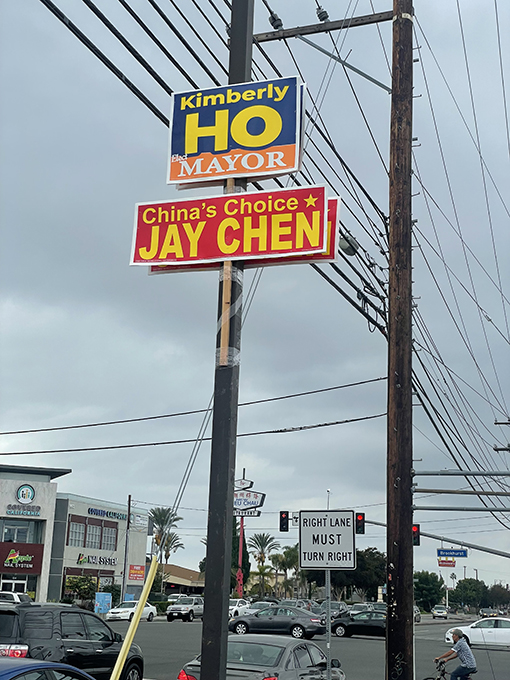
The greatest antidote to disinformation and vicious attacks is direct contact, and there is nothing as powerful as union member to union member conversation, particularly when members know that a strong union is what has enabled them to live a decent life with their families. That is why the radical decline of union membership, particularly in the private sector from 35% in 1955 to 6% today, makes it so difficult to counter the outright lies and distortions of Trump and his MAGA collaborators. When workers are in the same organization there is the basis for a healthy discussion even if there isn’t always agreement.
Working with fellow ILWUers and members of the Inland Boatmen’s Union, the marine division, we have been making a special appeal to our members on the phone, and It Works, it works really well! While we are flummoxed by the number of message machines we get, when we do go live with a member, the response is almost universally positive. Members have received emails and mailings from their Locals, and our calls reinforce the message that Steel is poison for the ILWU. Hearing directly from us that Chen is backed by the labor movement, members volunteer to take lawn signs and to corral their whole household into voting for Chen.
Mickey Chavez, a Local 94 (working foremen) member and newly elected head of the Southern California District Council (SCDC) reported to me that there were 25 active Local 94 members and 6 retirees in the district. He told me he had personally talked with all of them and that they are all “Yeses for Chen” including one Republican. I was delighted but initially mystified by Mickey’s ability to talk to everyone given I was getting more message machines than live members. Acting on a hunch I asked him if he had called from Local 94 offices. He burst out laughing and said yes, and that he called during dispatch, so all the members thought he was calling to offer them work! The power of a hiring hall union!
When I was on doors in Garden Grove, I approached the home of a 72-year-old female voter with “Declined to State” affiliation. I rang the bell and the husband answered. I asked for his spouse, and he asked what it was about. I told him I was working for Jay Chen for Congress, and he said, “He is a Democrat. Democrats are evil. Get off my porch you son of a bitch.” Compare this Fox fueled rant with the response of an ILWU member who is anti-Abortion and pro-GUNS. I called a member in the 45th and told him my mission. He said he would check Jay out. The next day I received the following message: “Hey Peter this is Fred. I am calling you back because you called me yesterday about the Congressional race in the 45th District. I did some research, and we had a get together in my neighborhood last night, as we do every Tuesday night. We have a very diverse neighborhood, Hispanic, white, and Asian. They don’t like this Jay Chen. I personally vote with my religious beliefs. Jay Chen is not a pro-gun guy. He doesn’t sound like a Christian to me. He is pro-abortion. I am not going to vote for him no matter what my union says. I may leave that race completely blank. These damn Democrats are pushing abortion. I am sick and tired of that. Fuck them. I am sorry for my language, and God is going to punish me for that. I am not voting for any Democrats. Sorry buddy!” I have returned his call and am hoping to have a face to face meet up with him. I continue to call Local 13 members and have had conversations with two registered Republicans who agreed to vote for Chen because their union is on record supporting him. Solidarity just this once!
The power of the union can bind people together. I can at least lead to a respectful issues-based discussion and a respectful disagreement that doesn’t come to blows!
Despite my long history on doors, I make rookie mistakes. I went to the door of 20-year-old Basurto Jimenez, a registered Democrat. I told him I was working for Jay Chen for Congress and asked him if he had heard of him. He said no, so I proceeded to say that he was “Running against a right-wing Republican named Michele Steel”. An older female voice behind him spoke up and said, “We are a right-wing Republican household”. Basurto sheepishly retreated, obviously used to his outsider status when it came to family politics. I stepped away from the porch and back out into the 90-degree heat of the OC. An older man followed me out and said, “Get yourself a hat or you will die of sunstroke.” I replied that this is a very humane right-wing Republican household! There is nothing like the doors to open insights into America with all its frights and faults, humanity, and kindness.
Good luck to all of us on November 8th! VOTE!
…

